Sustentabilidad Sustainability
Mercado Inmobiliario sustentablemente comprometido A Real Estate market committed to sustainable development
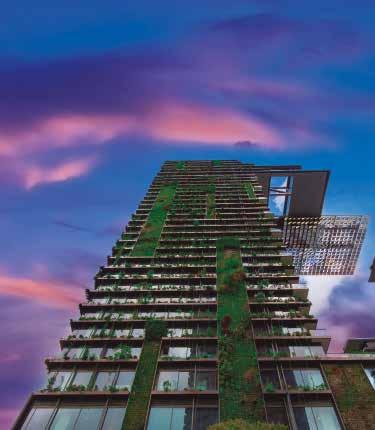
Materiales y procesos sustentables Sustainable Materials and Processes
Perspectivas hacia el 2050 Perspectives towards 2050
¿Qué es el Urbanismo táctico? What is tactical urbanism
Sustentabilidad en el contexto legal Sustainability in a Legal Context
Tecnología y desarrollo sustentable Technology and sustainable development
No 007
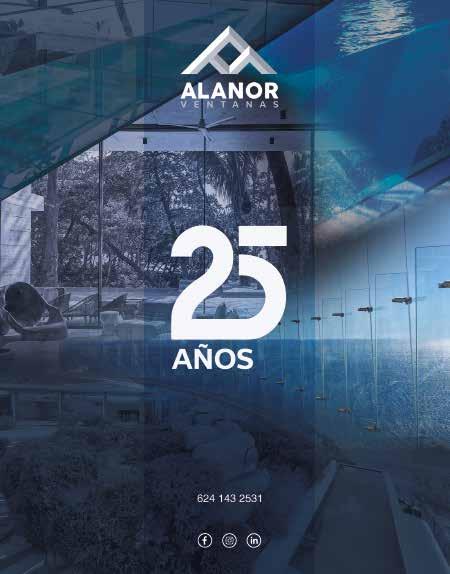
Los Pardones 2336 Colonia El Progeso Cabo San Lucas, B.C.S. CP 23477 info@alanor.mx
EDICIÓN 7/ 2022
CARTA DEL EDITOR Editorial
[ESLO.]

La comunidad de profesionales en desarrollo inmobiliario y construcción
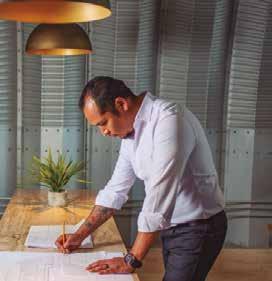

En estas páginas hablaremos de Sustentabili dad desde el punto técnico, legal y de desarro llo. Profundizaremos acerca de cómo integrarla en nuestros proyectos, lo que realmente signi fica y la importancia de entenderla de forma integral. Revisaremos como es que cada día se vuelve imperante tomar conciencia de lo que hacemos y cómo lo hacemos, lo cual nos lleva a preguntarnos si nuestras acciones son respon sables con nuestro entorno. A continuación, trataremos de entender un poco más acerca de este concepto a veces incomprendido, dentro de esta que será la primera parte de una tem porada dedicada a este tema. Como siempre, te invito a ir de la mano de nuestros expertos profesionales. Acompáñanos.
In these pages we will talk about Sustainability from the technical, legal, and developmental point of view. We will delve into how to integrate it into our projects, what it really means and the importance of understanding it holistically. We will review how every day it becomes imperative to become aware of what we do and how we do it, which leads us to wonder if our actions relate to our environment. Next, we will try to understand a little more about this sometimes-misunderstood concept, the first part of a series on these topics. As always, I invite you to go hand in hand with our professional experts. Join us.
7 LAND & BUILDING
AHORA



A TUS OIDOS llegamos
TENDENCIA INMOBILIARIA _18
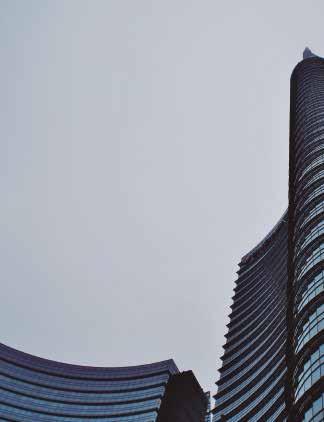
Mercado Inmobiliario sustentablemente comprometido
A real estate market committed to sustainable development Gustavo González
TENDENCIA
ARQUITECTONICA _26
Arquitectura sustentable
Una manera de coexistir con la naturaleza Sustainable Architecture. A Way to Coexist with Nature Alejandrina Solórzano Arquitectura sostenible, ¿tendencia global o utopía?
Sustainable architecture, global trend, or utopia? Arturo Aispuro
TENDENCIA
CONSTRUCTIVA _32
Materiales y procesos sustentables Sustainable Materials and Processes
Francisco Campas ¿Cómo construir siendo amigable con el medio ambiente? How to Build with the Environment in Mind Ricardo Reyes
ARTE Y DISEÑO _40
¿Cómo integrar la sustentabilidad y el arte? How to Integrate Sustainability and Art Pedro Gutiérrez
AGENDA ACADEMICA _44
La sustentabilidad en la formación académica
Sustainability in Academia Jorge Maldonado Diferencia entre sustentabilidad y sostenibilidad
Difference between sustainability and sustainable Alejandro Rodríguez
ECO-TECNOLOGÍAS _50
Perspectivas hacia el 2050
Perspectives towards 2050 Félix Fernández
¿Qué es el greenwashing? What is greenwashing? Mauricio Anaya ¿Cómo crear un espacio sustentable? How to create a sustainable space Francisco Vargas
AGENDA URBANA _62
¿Qué es el Urbanismo táctico? What is tactical urbanism Ussiel García Agenda 2040 Agenda 2040 Ussiel García
LEGAL Y FINANZAS _70
Sustentabilidad en el contexto legal Sustainability in a Legal Context J. Eduardo Tapia Zuckermann Manifestación de Impacto Ambiental Manifestations of Environmental Impact Héctor Segovia
GEEKS _80
Tecnología y desarrollo sustentable Technology and sustainable development César Acostta Metaverso Metaverse Gustavo González
CONOCE BAJA _86
Un lugar sustentable y especial A sustainable and special place Francisco Vargas Migriño una mirada al Pacífico Migriño, a look at the Pacific Ricardo Reyes
SOCIALES _92
Chefs x Los Cabos al rescate de Santiago Chefs x Los Cabos to Santiago’s rescue César Acostta
REAL ESTATE _94
Las mejores inversiones en México The Best Real Estate Investment in Mexico
ÍNDICE CONTENTS
9 LAND & BUILDING
CONSEJO
RICARDO REYES
Director General Land & Building Magazine
Director General Proyect, M&R Cabo Developers
Ingeniero Civil (ITMAR), Ingeniero Industrial (ITESM)
Maestría: Dirección de Empresa Constructora e Inmobiliaria (ITAM)
Project Manager: Dirección de proyectos (Universidad Anáhuac)
Diplomado: Innovación en la construcción, Administración de la construcción Planeación de proyectos (ITESM)
Certificado: Control Presupuestal, Administración y Planeación de obra (OPUS)
Certificado: Six Sigma Yellow Belt, Supply Chain (Sigma Pro – ISCEA)
PEDRO GUTIÉRREZ LIZARRAGA
Director: Grupo Alanor, Pedro Gutiérrez Studio, Comuni.K
Director de Arte: Land & Building Magazine, Iconos Comunicación
Director de Diseño: Hucill comunicación. Collage Diseño Gráfico Licenciatura: Ciencias de la Comunicación Gráfica (UAM)
HÉCTOR SEGOVIA-TAVERA
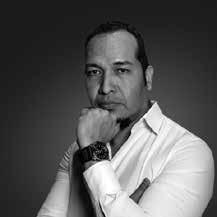
Director Jurídico: Land & Building Magazine
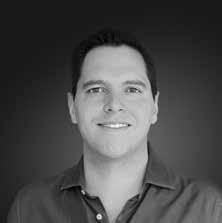

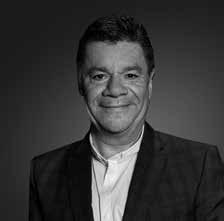
Socio fundador: Centro Empresarial de Distrito Federal. Socio: Firma legal MOWAT/ Rechtlich & Gentan I.S.C. Licenciado en Derecho (Universidad La Salle)
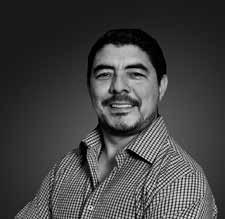
Diplomado: Especialización en Derecho Laboral y Seguridad Social (ITAM) Oratoria, Comprensión de Textos Jurídicos y Redacción Jurídica (La Salle)
La Nueva Ley de Amparo.
GUSTAVO GONZÁLEZ
Director Sector Oficinas en Colliers International (CDMX)
Representación de “Tenants” a nivel Nacional / LatAm. Fundador de programa Understanding Companies Environment a nivel Comercial/ Industrial/Oficinas. Lic. en Mercadotecnia (ITESM)
Diplomado en Inversión Marketing y Desarrollos Inmobiliarios (Universidad Ibero) MDI
Dirección de Empresas Constructoras e Inmobiliarias (ITAM)
10 LAND & BUILDING
COLABORADORES
ALBERTO VILLADA
Director de Desarrollo del Grupo Olarena en Los Cabos. Presidente de la Asociación de Desarrolladores Turísticos e Inmobiliarios de Los Cabos.

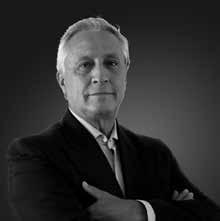
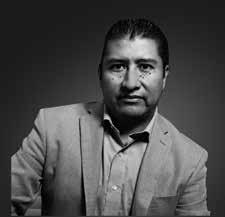
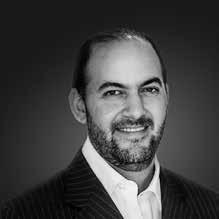

Vicepresidente del Consejo Coordinador de Los Cabos. Estudios y Formación: Licenciado en Turismo con la especialidad de Planeación y Desarrollo Turístico. Diplomado en Marketing para empresas de servicios turísticos.
EDUARDO TAPIA ZUCKERMANN Socio administrador de Tapia Zuckermann, S.C.
Miembro: Barra de Abogados del Estado de Nueva York, Barra Mexicana, Colegio de Abogados, A.C. (BMA) y Presidente Fundador de su capítulo en B.C.S. American Bar Association (ABA), Miembro Fundador y primer tesorero de ALISA (Universidad de Texas, Austin) Licenciatura en Derecho (Universidad Iberoamericana) Maestría en derecho (LL.M.) (Universidad de texas en Austin)
Diplomado: Obligaciones y Contratos (Escuela Libre de Derecho).
ARTURO AISPURO
Director General de SOLDI. Socio Fundador y Director General de Aispuro–Martínez Arquitectos. Profesor de Posgrado en Universidades e Instituciones Mexicanas. Conferencista y Colaborador en Foros y Publicaciones Especializadas y Promotor de Proyectos Sociales y de Inversión. Presidente de Manos al Futuro de los Oficios, A.C Estudios y Formación: Arquitecto por la Universidad Nacional Autónoma de México. Proyectista y Consultor en: Arquitectura; Diseño Urbano y Espacio Público; Medio Ambiente e Infraestructura.
USSIEL GARCÍA
Director General (IMPLAN Los Cabos)
Socio: Federación Iberoamericana de Urbanistas, Socio Fundador de FOROPOLIS México, A.C. Miembro Activo de la Unión Iberoamericana de Urbanistas (UIM). Licenciatura en Planeación Territorial (UAM) Maestría en Ciencias y Artes para el Diseño (UAM) Certificaciones: Perito en Desarrollo Urbano (Gobierno de la CDMX), Planeación Estratégica de Proyectos (UANL).
11 LAND & BUILDING
COLABORADORES
JORGE MALDONADO
Director General COEDME, S.A. de C.V
CEO en Campus Virtual Mayacollege
Catedrático de la carrera de Arquitectura en la UVM
Directivo del Centro Universitario UTEG, jefe de la Unidad de Evaluación Académica. Ingeniero Arquitecto IPN
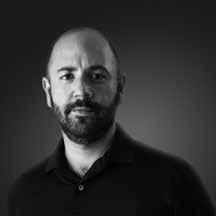
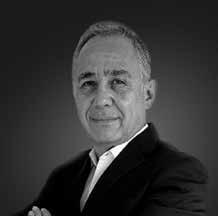
Licenciado en Administración de Negocios Internacionales UV Ingeniero Civil (Pasante por el acuerdo 286-SEP).
PILAR GARCÍA
Licenciada en Derecho por la Universidad Autónoma de Guadalajara.
Maestra en Valuación por la Universidad del Valle de Atemajac. Maestra en Derecho de la Empresa por la Universidad Panamericana. Perito Valuador autorizada por el Ayuntamiento de Los Cabos, B.C.S.
Miembro asociado de la Asociación Nacional del Notariado Mexicano, A.C. Miembro asociado del Colegio de Notarios Públicos de Baja California Sur, A.C.
FRANCISCO VARGAS
Jefe de Operaciones y Co-fundador de Innovación Solar S.A. de C.V Ingeniería Mecánica y Eléctrica (Universidad Iberoamericana)
Capacitación por el North American Board of Certified Energy Practioners y Solar Energy International (E.U.A.)

FERNANDA MANRÍQUEZ


Directora General de Manríquez Seguros y Fianzas Licenciada en Comunicación (UNIVA)
Asesora de Seguros y Fianzas (CNSF Comisión Nacional de Seguros y Fianzas autorización a nivel nacional)
12 LAND & BUILDING
COLABORADORES
JACINTO AVALOS RAZ GUZMAN
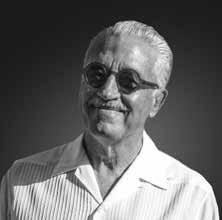
Director General de Avalos Arquitectos y Asociados, S. C. Académico de Numero de la Academia Nacional de Arquitectura Presidente de Building Baja´s Future, A. C. Egresado de la Universidad Iberoamericana – UNAM Maestría en Diseño Urbano del Politécnico de Oxford Diseño arquitectónico, planeación urbana y construcción
ALEJANDRINA SOLÓRZANO

Directora de Proyectos (Proyect) Gerente de proyectos (M&R Cabo Developers ) Coordinador de Contenido (Land & Building Magazine) Licenciatura en Arquitectura (CUAAD, UDG)

Diplomado: Planeación y Control Integral de Obra (Opus Ecosoft) Autocad Workshop (STPS), Revit Architecture Workshop, Revit Architecture, Revit Structure y Revit MEP (Autodesk)
MISHAN ANDRE
Director de Operación Comercial Cabo Dream Homes Real Estate Licenciatura en Finanzas (Cal State Northridge) Certificación: CNE (Instituto Inmobiliario Global México, A.C.), CONOCER (Gobierno del Estado de B.C.S. Secretaría de Turismo, Economía y Sustentabilidad)
MAURICIO ANAYA
Coordinador de Ventas y Analista de Datos (Engel & Völkers Snell Real Estate). Miembro MLS y miembro de mesa directiva AMPI como tesorero (2019-2020) Ingeniero en Mecatrónica por el Tec de Monterrey Especialidad en automatización por Boise State University
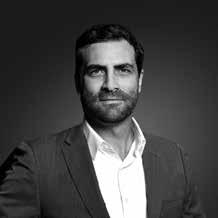
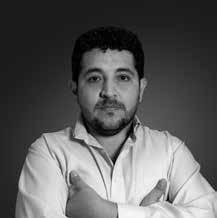
13 LAND & BUILDING
COLABORADORES
FRANCISCO CAMPAS
Director General de Desarrollo Urbano (Ayuntamiento de Los Cabos) Ex-Presidente del Colegio de Ingenieros Civiles de B.C.S. Sección Los Cabos A.C. Presidente de la Junta de Honor de Asociación de Gerentes de Ingeniería y Mantenimiento de Los Cabos, A.C.
Miembro del Patronato de Bomberos de Cabo San Lucas, A.C. Asesor en Tramitología y Supervisión de Proyectos de Construcción. Ingeniería Civil (UAS) Diplomado en Desarrollo en Habilidades Gerenciales (ICAMI), Liderazgo Ambiental (SEMARNAT-PROFEPA), Calidad Total (STARWOOD).
ALEJANDRO RODRIGUEZ BALSA
Lic. en. Ciencias de la Comunicación y Posgrado en Marketing por la Universidad Anáhuac. Programa de Alta Dirección de la Universidad de Berkeley. Fundador y Director de Interactia. Miembro de la Academia Mexicana de Comunicación. Miembro del Consejo Directivo de la AMAP (Asociación Mexicana de Agencias de Publicidad) y de la IAB (Interactive Advertising Bureau).
Ha sido juez del Premio EFFIE (Premios a la eficiencia publicitaria) en tres ocasiones 2009, 2010 y 2011. Fue miembro de la Academia del Premio Internacional Ibest, y miembro del Consejo Consultivo de Internet World. Fue fundador y Director General de la Asociación Mexicana de Internet (AMIPCI).
HANS ABRAHAM VAZQUEZ
Delegado en Baja California Sur de la Procuraduría de la Defensa del Contribuyente Lic. en Derecho en la Universidad de Pedregal. Especialidad en Derecho Corporativo Maestría en Derecho Fiscal Subdirector de Area en la Dirección de Enlace Delegacional Diplomados en Derechos Humanos en Materia Fiscal, Impuestos Internacionales, Comercio Exterior y Aduanal, Inducción a la Administración Pública Federal y a la Procuraduría de la Defensa del Contribuyente.
ALFREDO LIZARRAGA
Director General de Leads Agency
Socio fundador de ARCO Group Marketeniment Socio fundador Caja Negra Mkt
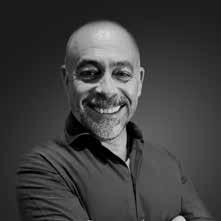
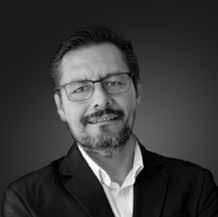
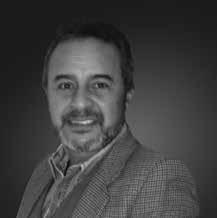
Licenciado en Arquitectura (Universidad Autónoma Metropolitana) Diplomado en Alta Dirección (IEE, Instituto de Especialización para Ejecutivos) Diseñador y Productor de entretenimiento
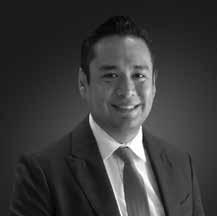
14 LAND & BUILDING
DIRECCIÓN
Dirección General Ing. Ricardo Reyes Sandoval direccion@landandbuilding.com
Director Jurídico Lic. Héctor Segovia-Tavera hsegovia@landandbuilding.com Director de Arte Lic. Pedro Gutiérrez Lizárraga pgutierrez@landandbuilding.com
COORDINACIÓN • ADMINISTRACIÓN
Coordinación
RELACIONES
COORDINACIÓN
Coordinador de Secciones Ing. Ricardo Reyes Sandoval dirección@landandbuilding.com
Coordinador Tendencia Inmobiliaria Mauricio Anaya mauricioa@landandbuilding.com
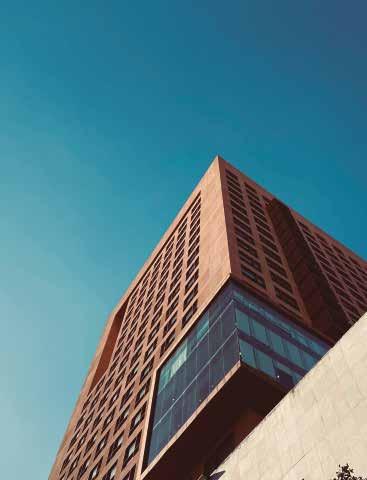
Coordinación de Arquitectura Arq. Alejandrina Solórzano alejandrina@landandbuilding.com
Coordinador de Ingenieros Ing. Francisco Campas fcampas@landandbuilding.com
Agenda Académica Ing. Jorge Maldonado jorgem@landandbuilding.com
Agenda Urbana Urb. Ussiel García Moreno ussiel@landandbuilding.com
Sección Legal y Finanzas Lic. Eduardo Tapia Zuckermann etapia@landandbuilding.com

Eco-Tecnologías Ing. Francisco Vargas Garibay franv@landandbuilding.com
LAND AND BUILDING MAGAZINE. Año 2022, No. 07 es una publicación editada por INNOVACIÓN EN ARTE TECNOLÓGICO S.A. de C.V. Calle Las Palmas esquina Girasol, lote 1, Colonia Jacarandas, Cabo San Lucas BCS, 23473, Teléfono 624 157 0697, www.landandbuilding.com. Editor responsable: Ricardo Reyes Sandoval. Reservas de derecho al uso exclusivo No. en trámite, ISSN: en trámite, ambos otorgados por el Instituto Nacional del Derecho de Autor. Licitud de título y contenido No. en trámite, otorgado por la comisión calificadora de publicaciones y revistas ilustradas de
Marketing Michel Zura mich@landandbuilding.com
Coordinación Comercial Arq. Alfredo Lizárraga alfredo@landandbuilding.com
PÚBLICAS Representante México y LATAM Lic. Gustavo González gustavo@landandbuilding.com
publicación
Mayo del
en
SA
CV, ubicados
Edición y traducción Editorial Ing. César Acostta Domínguez Diego Escalante Talamás WEB • DISEÑO • RRSS Diseño Editorial Lic. Pedro Gutiérrez Lizárraga pgutierrez@landandbuilding.com Mtra. Pilar Jiménez Pérez pilar@strategix4.mx Diseño Web y RRSS Strategix4 COLEGIOS • ASOCIACIONES • DIRECCIONES MUNICIPALES Colegio de Ingenieros Civiles de Los Cabos A.C. Barra Mexicana de Abogados Capítulo B.C.S Instituto Municipal de Planeación Urbana (IMPLAN) Dirección Municipal de Desarrollo Urbano CONTACTO info@landandbuilding.com (624) 123 1309 (624) 157 0697 ventas@landandbuilding.com www.landandbuilding.com 15 LAND & BUILDING L&B
la Secretaría de Gobernación. La presente
se terminó de imprimir en
2022
los talleres de SmartPress Visión
de
en Caravaggio 30, Col Mixcoac, Nonoalco, Benito Juárez, 03910, CDMX
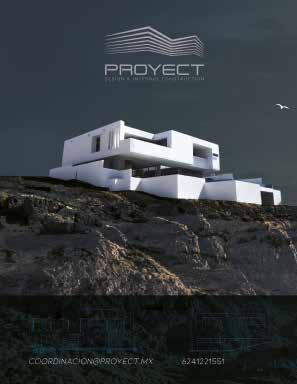

Mercado inmobiliario

sustentablemente comprometido
A Real Estate market committed to sustainable development
 Por Gustavo González
Por Gustavo González
La construcción es uno de los prin cipales motores de la economía y de los indicadores de desarrollo en cada país y cada vez más los desarrollado res están interesados en utilizar la parte sustentable en sus construccio nes, desde el tema residencial y hasta en aeropuertos.
Un desarrollo sustentable busca gene rar la mayor fuente de energía de los recursos a su alrededor y de ese modo minimizar el impacto ambiental. Hoy las nuevas generaciones que buscan casa/departamento, piden espacios con tecnología avanzada, uso de pane les solares, iluminación LED, reciclaje, captación pluvial y áreas verdes que generen un beneficio para la comuni dad. Incluso en los nuevos desarrollos ya se consideran menos lugares de estacionamiento para automóviles y mayor espacio para bicicletas.
Construction is one of the main engines of the economy and a development indicator in every country. More and more developers are interested in using sustainable parts in their constructions, from the residential projects to public works such as airports.
A sustainable development seeks to generate the largest source of energy from the resources around it and thus minimize the environmental impact. Today the new generations looking for a house / apartment, ask for spaces with advanced technology, use of solar panels, LED lighting, recycling, rainwater harvesting and green areas that generate a benefit for the community. Even in new developments, fewer parking spaces for cars and more spaces for bicycles are already considered.
Foto: Stock 18 LAND & BUILDING
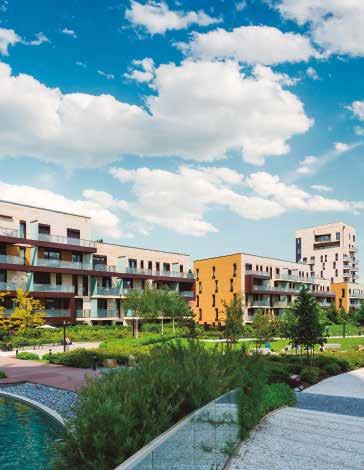
19 LAND & BUILDING
En edificios de oficinas se cuenta con una certificación LEED (Leadership in Energy & Environmental Design), desarro llada por el “US Green Building Council”. En la actualidad muchos de los edificios que buscan posicionarse y diferen ciarse deben contar con esta certificación, la cual se otorga en diferentes niveles (plata, oro, platino) dependiendo de la cantidad de puntos obtenidos (La base es 100 puntos, y como adicional se consideran 6 puntos por innovación en diseño y 4 puntos por prioridad regional).
El tema “sustentable” está convirtiéndose en una tenden cia a nivel mundial. Estados Unidos es el principal país con certificaciónes LEED obtenidas, sin embargo, países como Inglaterra, Emiratos Árabes, Canadá, China, Alemania y Países Bajos son reconocidos por contar con algunos de los edificios más sustentables en el mundo.
Un ejemplo claro es “The Edge” ubicado en Amsterdam (Países Bajos) considerado por algunos el edificio más sos tenible en los últimos años, el cual, gracias a su innovación tecnológica y tema de sustentabilidad obtuvo la puntua
ción más alta por la BREEAM (Building Research Establi shment´s Environmental Assesment Method). Su diseño arquitectónico y orientación esta pensado en poder utilizar la mayor cantidad de luz solar. Con la ayuda de la energía obtenida por los paneles solares, un acuífero, cristales duo vent y la reutilización de agua de lluvia para riego de áreas verdes y calefacción, permiten que el edificio funcione muy bien. “The Edge” como innovación, ha permitido que los tra bajadores por medio de sus teléfonos regulen la tempera tura e iluminación de cada área de trabajo, generando así , ahorro de energía.
En Latinoamérica, países como México y Brasil han segui do trabajando en certificaciones, ocupando a nivel global posiciones interesantes en cuanto a países con más desa rrollos sustentables. Por ejemplo, “Torre Reforma” ubicada en CDMX diseñada por el arquitecto Benjamín Romano, ha obtenido premios internacionales en cuanto a su arquitec tura/diseño y cuenta con certificación LEED Platino. En Rio de Janeiro (Brasil) se encuentra el “Museo del Mañana” di señado por el arquitecto español Santiago Calatrava, obra
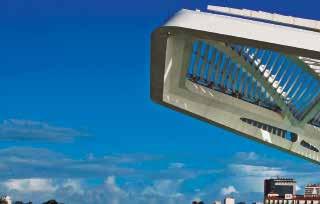
TENDENCIA INMOBILIARIA
20 LAND & BUILDING
Office buildings can have LEED (Leadership in Energy & Environmental Design) certifications, developed by the US Green Building Council. Currently many of the buildings that seek to differentiate themselves must have this certification, which is awarded at different levels (silver, gold, platinum) depending on the number of points obtained (The base is 100 points, and an additional 6 points are considered for innovation in design and 4 points for regional priority).
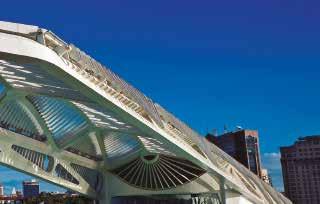
The “sustainable” theme is becoming a worldwide trend. The United States is the main country with LEED certifications obtained, however, countries such as England, United Arab Emirates, Canada, China, Germany and the Netherlands are recognized for having some of the most sustainable buildings in the world.
A clear example is “The Edge” located in Amsterdam (Netherlands) considered by some the most sustainable building in recent years, which, thanks to its technological innovation and sustainability theme obtained the highest score by the BREEAM (Building Research Establishment’s
Environmental Assessment Method). Its architectural design and orientation is designed to be able to use the greatest amount of sunlight. With the help of the energy obtained by solar panels, an aquifer, duovent crystals and the reuse of rainwater for irrigation of green areas and heating, they allow the building to function very well. “The Edge” as an innovation, has allowed workers through their phones to regulate the temperature and lighting of each work area, thus generating energy savings.
In Latin America, countries such as Mexico and Brazil have continued to work on certifications, occupying interesting positions globally in terms of countries with more sustainable developments. For example, “Torre Reforma” located in CDMX designed by the architect Benjamín Romano, has won international awards in terms of its architecture / design and has LEED Platinum certification. In Rio de Janeiro (Brazil) is the “Museum of Tomorrow” designed by the Spanish architect Santiago Calatrava, is an architectural work that uses seawater as an energy source, in addition to the use of solar panels.
TENDENCIA INMOBILIARIA
21 LAND & BUILDING
Foto: Stock
arquitectónica que utiliza el agua de mar como fuente de energía, sumado al uso de paneles solares.
La construcción y desarrollo de aeropuertos también debe rá enfocarse en la distribución, ubicación y sustentabilidad, ya que cada vez tendremos mayor población y el uso de las instalaciones seguirá aumentando. Actualmente, uno de los mejores aeropuertos del mundo y galardonado por “World Airport Awards”, es “Jewel Changi” en Singapur, debido a su diseño y entretenimiento. Parte de su cultura es utilizar autos eléctricos para llevar el equipaje dentro de las pistas y contar con sistemas de tratamiento de agua. “Jewel Chan gi” cuenta con grandes áreas verdes y una gran innovadora cúpula de cristal que brindan a los pasajeros una experien cia única (bosque con más de 1500 árboles y una cascada central de 40 m2).
Se espera que los futuros desarrollos opten más por el tema sustentable, de la mano tendremos más ciudades inteligentes que brinden mejor comunicación y sean más eficientes en cuanto al uso de sus recursos naturales.
The construction and development of airports should also focus on distribution, location, and sustainability, as populations increase, and the use of facilities will continue to trend upward. Currently, one of the best airports in the world and awarded by “World Airport Awards”, is “Jewel Changi” in Singapore, due to its design and entertainment. Part of their features is to use electric cars to carry luggage inside the runways and have water treatment systems. “Jewel Changi” has large green areas and a large innovative glass dome that provide passengers with a unique experience (forest with more than 1,500 trees and a central waterfall of 40 m2).
It is expected that future developments will opt more for the sustainable theme, hand in hand we will have more smart cities that provide better communication and are more efficient in terms of the use of their natural resources.
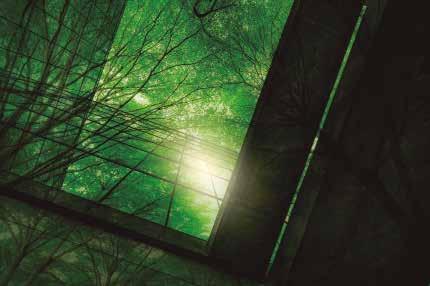
TENDENCIA INMOBILIARIA
22 LAND & BUILDING
Foto: Stock
Llegan “Pisando” Fuerte Rocwhel Tec Apertura sucursal en Los Cabos
RRocwhel Tec es una empresa sonoren se que se dedica a asesorar y proveer productos, herramientas, maquinaria y servicios para cubrir las necesidades de los sectores de la construcción, indus tria, telecomunicaciones, restaurantera y turismo. Está conformada por los so cios Ing. Javier Herrera Núñez, Ing. Juan Woolfok Ledezma e Ing. Francisco Cano Ruiz. Recientemente, Rockwell Tec inició operaciones en Baja California al apertu rar una sucursal en Los Cabos.
“Para lograr nuestros objetivos conta mos con el respaldo de marcas de pri mer nivel; nos diferenciamos por nuestra entrega, experiencia y profesionalismo; esto nos proporcionará las herramientas necesarias para lograr nuestras metas de manera eficaz y oportuna”, dijo el Ing. Herrera.
El Ing. Woolfok añadió: “Nuestra visión es lograr el posicionamiento de la empresa en varias regiones del país, tanto en el gusto de nuestros clientes como en el de nuestros proveedores, lo cual pensamos lograr a corto y mediano plazo”.
“Somos una empresa que cree en el de sarrollo y crecimiento de nuestro perso nal; esto está basado en constante capa citación y vocación de servicio dentro de un ambiente seguro y sano, otorgando con ello una mejora en lo laboral y en su crecimiento humano, el cual se refleja tanto en el ámbito familiar como en lo profesional”, añadió el Ing. Cano.
Nuestros servicios incluyen:
• Proyectos, suministro e instalación de cableados especiales tales como control de incendio, control de accesos biométri cos, automatización, etc.
• Implementación de servidores, ins pección y realización de inventarios, así
como conexión y alimentación de uni dades ITC y realización de diagramas de red.
• Suministro e instalación de equipos de protecciones y ahorro de energía.
• Estudios de calidad de la energía y Có digo Red.
Rocwhel Tec se fundó en el 2019 y nació de la fusión de los esfuerzos empresaria les de tres grandes empresas: SELEPAC, WOOLFOK SYSTEMS y CYDISA, las cua les, en conjunto tienen más de 15 años de experiencia en los sectores mencionados. “Actualmente contamos con el respaldo de proveedores de primer nivel, tanto nacional como internacional, los cuales nos permiten cubrir las necesidades de nuestros clientes; también contamos con el personal capacitado para llevar a cabo estas funciones con cobertura a nivel na cional; nuestro propósito es proveer de tecnología de punta con productos con los últimos avances e innovaciones”, aña dió el Ing. Herrera.
Las líneas que maneja Rocwhel Tec son: Kale Fans América, Climóvil, Kleverness, Finder, Leviton, PQ Barcón, Sera4, ZKTe co y Dahua Technology.
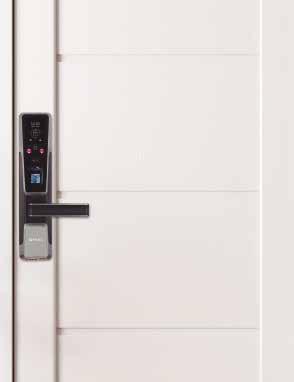
Algunos de nuestros clientes son: Fres nillo PLC, Grupo México, Minera Frisco, Holcim Apasco, M3, Minera Santa Rita, Ford, Yazaki, Fiesta Americana, Hoteles Hilton, Carso, Palominos, Los Arbolitos de Cajeme, Molinos La Fama, Magna, Munsa, Martinrea y Chiltepinos, entre muchos otros.
Visítanos, síguenos o escanéanos en:
Web: www.rocwheltec.com
Facebook: Rocwheltec
Twitter: @rocwheltec
Instagram: Rocwheltec ANAANA
24 LAND & BUILDING
They Arrive “Marching” Strong Rocwhel Tec The Opening of a Branch in Los Cabos
Rocwhel Tec is a company from Sonora that is dedicated to consulting on and providing products, tools, machinery, and services to meet the needs of the construction, telecommunications, restaurant and tourism industries. It is made up of partners Ing. Javier Herrera Núñez, Ing. Juan Woolfok Ledezma and Ing. Francisco Cano Ruiz. Rockwell Tec recently started operations in Baja California by opening a branch in Los Cabos.

“To achieve our goals, we have the support of top-level brands; we differentiate ourselves by our dedication, experience and professionalism. This provides us with the necessary tools to achieve our goals in an effective and timely manner”, said Mr. Herrera.
Mr. Woolfok added: “Our vision is to position the company in several regions of the country, both in the goals of our customers and our suppliers, which we plan to achieve in both the short and medium term.”
“We are a company that believes in the development and growth of our staff; This is based on constant training and dedication to service within a safe and healthy environment, thereby providing an improvement in the workplace and in their human growth, which is reflected both in the domestic and professional spheres”, added Mr. Spout.
Our services include:
· Projects, supply, and installation of special wiring such as fire control, biometric access control, automation, etc.
· Implementation of servers, inspection and carrying out of inventories, as well as connection and feeding of ITC units and realization of network diagrams.
· Supply and installation of protection and energy saving equipment.
· Power quality studies and Codigo De Red Mexican quality inspections.
Rocwhel Tec was founded in 2019 and was born from the merger of the business efforts of three large companies: SELEPAC, WOOLFOK SYSTEMS and CYDISA, which
combined have more than 15 years of experience in the aforementioned sectors. “Currently we have the support of top-tier suppliers, both nationally and internationally. This allows us to meet the needs of our customers; We also have trained personnel to carry out and support these functions in a national capacity. Our purpose is to provide state-of-the-art technology with products with the latest advances and innovations”, added Mr. Herrera.
The lines managed by Rocwhel Tec are: Kale Fans América, Climóvil, Kleverness, Finder, Leviton, PQ Barcón, Sera4, ZKTeco and Dahua Technology.
Some of our clients include: Fresnillo PLC, Grupo México, Minera Frisco, Holcim Apasco, M3, Minera Santa Rita, Ford, Yazaki, Fiesta Americana, Hilton Hotels, Carso, Palominos, Los Arbolitos de Cajeme, Molinos La Fama, Magna, Munsa , Martinrea and Chiltepinos, among many others.
Visit us, follow us or scan us on: Web: www.rocwheltec.com Facebook: Rocwheltec Twitter: @rocwheltec Instagram: Rocwheltec ANAANA

25 LAND & BUILDING
Arquitectura sustentable. Una manera de coexistir con la naturaleza
Sustainable Architecture. A Way to Coexist with Nature
 Por Alejandrina Solorzano
Por Alejandrina Solorzano
Como su nombre lo indica, la arquitectura susten table es aquella que busca mantenerse a sí misma y depender lo menos posible de energias no reno vables. Esto lo logra con base a sus características, de cómo fue concebida y de su constante búsqueda de permanecer en equilibrio con el entorno que le rodea, teniendo como principio satisfacer las nece sidades del presente y como prioridad no compro meter las necesidades de las futuras generaciones.
Este término y su corriente fue acuñada en los años 80s cuando la primer Ministra de Noruega presen tó su informe ante las Naciones Unidas. En dicho in forme se hacia hincapié en que el empobrecimiento de la población mundial era una de las principales causas del deterioro ambiental a nivel global.
Pero quizá sea difícil concebir que una arquitectura sustentable sea posible, existen muchos mitos en torno a la sustentabilidad que poco a poco se han ido rompiendo para dejar paso no solo a un diseño más amable con el entono sino a una manera de vivir y coexistir con la naturaleza.
As its name indicates, sustainable architecture is one that seeks to maintain itself and depend as little as possible on non-renewable energy. It achieves this based on its characteristics, by how it was conceived and its constant search to remain in balance with the environment that surrounds it, having as a principle to satisfy the needs of the present and as a priority not to compromise the needs of future generations.
This term and its current form was coined in the 1980s when the Prime Minister of Norway presented her report to the United Nations. This report emphasized that the impoverishment of the world population was one of the main causes of global environmental deterioration.
But it may be difficult to conceive that a sustainable architecture is possible, there are many myths around sustainability that little by little have been broken to make way not only for a more friendly design with the environment but also for a way of living and coexisting with nature.
Foto: Stock 26 LAND & BUILDING
ARQUI TECTÓ NICA TENDENCI A
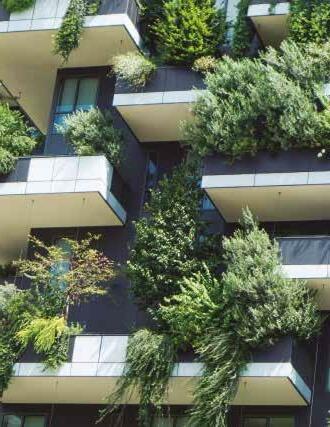
27 LAND & BUILDING
Uno de estos mitos es el pensar que es costoso tener un edificio “sustentable”, mayor mentira no hay, ya que al proyectar bajo esta tendencia, se buscará como prioridad que con las características del terreno, se aprovechen al máximo la dirección de los vientos, la trayectoria de la luz y otras condiciones del ambiente para ventilar e iluminar de manera natural y en conjunto con el uso de aislamien tos térmicos, estos puntos se convertirán en la clave para obtener ahorros a largo plazo y evitar el uso de tecnolo gías complejas a nivel energético.
También se piensa que los materiales para construir son inusuales y requieren de mucho mantenimiento. Esto no tiene por que ser así, ya que al proyectar se buscará que estos sean locales, fáciles de obtener y que su produc ción sea con menores emisiones de dióxido de carbono y residuos, por lo que el uso de materiales reciclados y re ciclables será prioridad y si estos son elegidos de forma adecuada, podrán ser de gran durabilidad y resistencia.
Hay que recordar también que se proyectarán sistemas de uso racional y eficiente del agua, reutilizando las agua grises, residuales y de lluvia para darles un doble uso an tes de filtrarlas al subsuelo y con esto completar el ciclo.
Aunque pareciera que estas caracteristicas solo son aplica bles a edificios nuevos, no es asi, ya que no hay mejor recicla je que la reutilizacion de un edificio que ya existe, aplicando una técnica denominada reciclado energetico, la cual consta entre otros aspectos de realizar una auditoria energética, en la que se verán las ventanas de posibilidades de mejoras para dar al edificio un nuevo ciclo de vida sustentable.
Existe en la actualidad una gran oferta académica, tanto en México como en el mundo para aprender los principios y técnicas para aportar en el desarrollo de nuevas tecno logias que sean compatibles con esta tendencia. Esto de muestra la consolidacion institucional que ha alcanzando esta corriente de pensamiento, junto con el compromiso de arquitectos, ingenieros y urbanistas para tomar con cencia del impacto ambiental que las construcciones y ciu dades tiene ante su entorno.
One of these myths is to think that it is expensive to have a “sustainable” building. There is no greater lie, since when looking at current projections of this trend, it will become a high priority. Details such as the characteristics of the land, the kinds of winds that pass through a certain construction and other environmental conditions to ventilate and illuminate naturally and in conjunction with the use of thermal insulation will become the key to obtaining long-term savings and avoiding the use of complex technologies when it comes to powered features.
The building materials are also thought to be unusual and require a lot of maintenance. This does not have to be the case. It is becoming increasingly easy to obtain the materials required for these kinds of features and with that their production has become much more efficient. The use of recycled and recyclable materials will be commonplace. If these are chosen properly, they can be of great durability and resistance.
It should also be remembered that systems for the rational and efficient use of water will be projected, reusing gray, residual and rainwater to give it a double use before filtering it into the subsoil and thus completing the cycle.
Although it seems that these characteristics are only applicable to new buildings, this is not the case, since there is no better recycling than the reuse of an existing building, applying a technique called energy recycling, which consists, among other aspects, of carrying out an energy audit. In this, the windows of improvement possibilities will be seen to give the building a new sustainable life cycle.
There is currently a great academic discourse, both in Mexico and in the world, to learn the principles and techniques to contribute to the development of new technologies that are compatible with this trend. This demonstrates the institutional consolidation that this current of thought has achieved, along with the commitment of architects, engineers and urban planners to become aware of the environmental impact that buildings and cities have on their surroundings.
ARQUITECTÓNICA TENDENCIA
28 LAND & BUILDING
En resumen, podemos considerar que si los tres principa les principios que rigen a la arquitectura sustentable, los cuales son: el análisis de los espacios, la reducción de afec taciones y el uso de materiales y energias renovables son tomados en cuenta desde la concepción del proyecto, se podrán obtener como resultado espacios que sean saluda bles, viables económicamente y sensibles a las necesidades sociales, culturales y ecológicas para minimizar el impacto de los edificios sobre su ambiente y sus habitantes.
In summary, we can consider that if the three main principles that govern sustainable architecture, which are: the analysis of spaces, the reduction of effects and the use of renewable materials and energies are taken into account from the conception of the project, As a result, spaces that are healthy, economically viable and sensitive to social, cultural and ecological needs can be obtained to minimize the impact of buildings on their environment and their inhabitants.
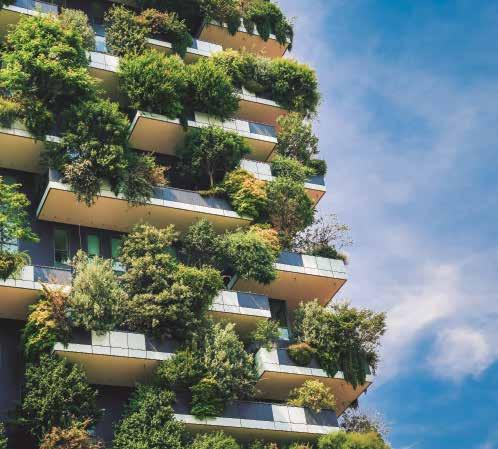
TENDENCIA ARQUITECTÓNICA
29 LAND & BUILDING
Foto: Stock
Arquitectura sostenible, ¿tendencia global o utopía?
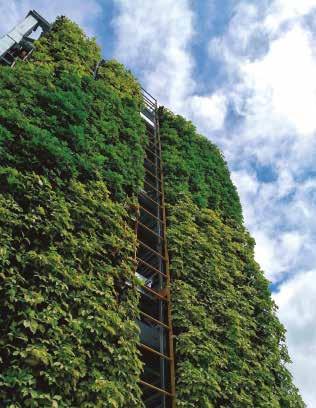 Por Arturo Aispuro
Por Arturo Aispuro
30 LAND & BUILDING
Foto: Stock
Pocos conceptos han evolucionado y sumado tantos atri butos tan rápidamente como el de la arquitectura sosteni ble, al punto en que hoy, ya se discuten también los temas sociales y económicos en su concepción e implementación.
Para entender su origen, debemos remontarnos a 1987, cuando la ministra noruega Gro Brundtland incorporó en el informe: Nuestro futuro común, presentado en la 42ª sesión de las Naciones Unidas, el término de “desarrollo sostenible”. Para explicarlo, utilizó la frase que hoy es am pliamente conocida: “El desarrollo es sostenible cuando satisface las necesidades de la presente generación sin comprometer la capacidad de las futuras generaciones para que satisfagan sus propias necesidades”.
Aunque el concepto se refería inicialmente a la totalidad del entorno construido y su estrecha relación con el medio natural, desde entonces, se ha arraigado en los proyec tos de arquitectura, creando una tendencia internacional y manteniendo los mismos principios que le dieron vida:
• El análisis del ciclo de vida de los materiales a utilizar, privilegiando el uso de materiales locales;
• El desarrollo e incorporación de energías renovables en los proyectos y;
• La reducción de las cantidades de materiales y energía utilizados en la extracción de recursos naturales, su explo tación y la destrucción o el reciclaje de los residuos.
Pero junto con su rápida evolución, han surgido tambien serias preocupaciones por el alto costo de las tecnologías que nos ayudarían a cumplir los ambiciosos objetivos plan teados, y la dificultad para incorpararlas en los proyectos de mayor impacto urbano, ambiental o social, ya sea por los limitados recursos que se destinan a estos proyectos, o incluso por la complejidad y costo del mantenimiento que idealmente tendrían que realizar los propios usuarios de grandes conjuntos de vivienda o equipamiento social.
Lo que es innegable, es que el deterioro ambiental acu mulado y creciente, nos obliga a ser cada vez más crea tivos en la conceptualización de proyectos y a incentivar el desarrollo y uso de tecnologías en su edificación, de la mano con un ambicioso programa educativo que ga rantice que la arquitectura sostenible no sea una utopía, sino ¡Un objetivo alcanzable!
Sustainable architecture, global trend, or utopia?
Few concepts have evolved and added so many attributes as quickly as that of sustainable architecture, to the point where today, social, and economic issues are also discussed in its conception and implementation.
To understand its origin, we must go back to 1987, when the Norwegian minister Gro Brundtland incorporated in the report: Our common future, presented at the 42nd session of the United Nations, the term “sustainable development”. To explain it, he used the phrase that is widely known today: “Development is sustainable when it meets the needs of the present generation without compromising the ability of future generations to meet their own needs.”
Although the concept initially referred to the entire built environment and its close relationship with the natural environment, since then, it has taken root in architectural projects, creating an international trend and maintaining the same principles that gave it life:
• The analysis of the life cycle of the materials to be used, favoring the use of local materials
• The development and incorporation of renewable energy in the projects

• The reduction of the amounts of materials and energy used in the extraction of natural resources, their exploitation, and the proper disposal of waste.
But along with its rapid evolution, serious concerns have also arisen about the high cost of the technologies that would help us meet the ambitious objectives set, and the difficulty in incorporating them into projects with the greatest urban, environmental or social impact, whether due to limited resources allocated to these projects, or even due to the complexity and cost of maintenance that would ideally have to be carried out by the users of large housing complexes or social facilities.
What is undeniable is that the accumulated and growing environmental deterioration forces us to be increasingly creative in the conceptualization of projects and to encourage the development and use of technologies in their construction, hand in hand with an ambitious educational program that guarantees that sustainable architecture is not a utopia, a unreachable concept, but an achievable goal!
31 LAND & BUILDING
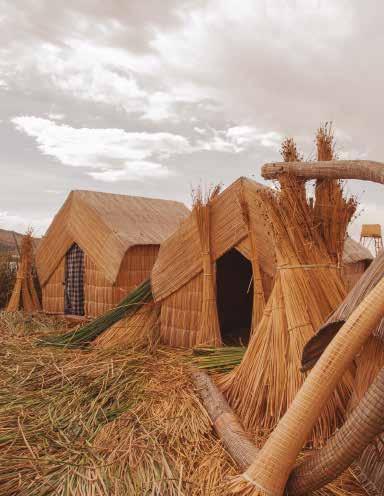
32 LAND & BUILDING
Materiales y procesos
sustentables
Por Francisco Campas
Las necesidades van cambiando conforme transcurre el tiempo. Aunque pudiéramos pensar que regresamos al origen cuando el hombre se asentó en un lugar fijo donde hubiera los recursos suficientes para poder sobrevivir, de cualquier manera, se necesitaba desplazarse al depender de la caza y la recolección de frutas como forma de alimentación o bien cuando se agotaban dichos recursos además del agua.
Al implementarse la agricultura para la producción de alimentos, provocó que se buscaran lugares adecuados con ciertas condiciones como, la existencia de agua suficiente, tierra con aptitudes agrícolas y que a su vez apoyara la práctica de la ganadería. Aquí es donde se dan los pasos para la sostenibilidad de la vida, desarrollando procesos sustentables de producción.
Sustainable Materials and Processes


Needs change over time. Although we could think that we returned to the origin when man settled in a fixed place where there were enough resources to survive, in any case, it was necessary to move depending on hunting and fruit gathering as a form of food or when depleted those resources in addition to water.
When agriculture was adapted for massive food production, it caused the search for suitable places with certain conditions, such as the existence of sufficient water, land with agricultural aptitudes and that in turn supported the practice of livestock. This is where steps are taken for the sustainability of life, developing sustainable production processes.
33 LAND & BUILDING
Foto: Stock
Para la construcción en principio no es diferente. Primero se aprovechaba lo que existía en la naturaleza, ya que se inicia con el uso de las cuevas con un mínimo de adap tación y se utilizaba como vivienda de manera temporal. Cuando el hombre se hace sedentario, se empezaron a utilizar materiales que permitieron poder combinarlos y realizar diversas edificaciones. Esto se hizo primeramente con fines habitacionales, sin embargo, conforme se fueron desarrollando las diferentes actividades económicas, sur gieron construcciones con usos y aplicaciones diferentes a la vivienda. La necesidad de socializar entre las perso nas también generó la necesidad de mayor diversidad de construcciones, la comunicación generó la necesidad de caminos, puentes y encauzamientos de agua. Así se fue generalizando una cantidad de edificaciones y obras de in fraestructura que fueron dando soporte al sedentarismo, al grado que se establecen los primeros asentamientos humanos con una pequeña cantidad de personas, hasta dar forma a las zonas urbanas desde pequeñas poblacio nes hasta grandes ciudades.
Las edificaciones del pasado se realizaban haciendo al gunas consideraciones, como orientación del sol, la direc ción de los vientos, uso de materiales con características térmicas, espesores de muros y losas, alturas entre piso y losa, entre otros. Esto permitía que fueran aptas para las diferentes condiciones climáticas, por lo que las necesida des de acondicionamiento por temperatura eran mínimas. Estos criterios tienen más vigencia que nunca, a diferen cia de que se tiene la ventaja de contar con el respaldo del avance tecnológico en diferentes materiales, equipos y maquinaria los cuales permiten integrar procesos de construcción y funcionamiento de los edificios para ha cerlos más confortables, más rápidos en su construcción y más eficientes en su gestión de operación.
Existen parámetros que permiten determinar la sustenta bilidad de los materiales y procesos en la edificación. Por ello se debe tener claro que se debe hacer un diseño sos tenible desde su construcción hasta su operación, consi derando evitar agotar los recursos como energía, agua, la tierra y materias primas. Así mismo, prevenir a toda costa la degradación ambiental y reducir la huella de carbono en los diferentes procesos tanto de construcción, produc ción de materias primas y todos los servicios inherentes en nuestra vida cotidiana para lograr edificaciones que
For construction, in principle, it is no different. First, what existed in nature was used, since it began with the use of caves with a minimum of adaptation and was used as a temporary home. When man became sedentary, materials began to be used that allowed them to be combined and make various buildings. This was done primarily for housing purposes, however, as the different economic activities developed, constructions with uses and applications other than housing emerged. The need to socialize among people also generated the need for a greater diversity of constructions, communication generated the need for roads, bridges and water channels. Thus, a number of buildings and infrastructure works were generalized that were giving support to a sedentary lifestyle, to the extent that the first human settlements were established with a small number of people, until giving shape to urban areas from small towns to large cities.
The buildings of the past were made with some considerations, such as orientation of the sun, the direction of the winds, use of materials with thermal characteristics, thickness of walls and slabs, heights between floor and slab, among others. This allowed them to be suitable for different climatic conditions, so the need for temperature conditioning was minimal. These criteria are more valid than ever, unlike the fact that they have the advantage of having the support of technological progress in different materials, equipment and machinery, which allow the integration of construction processes and the operation of buildings to make them more comfortable, faster in its construction and more efficient in its operation management.
There are parameters that allow determining the sustainability of the materials and processes in the building. For this reason, it must be clear that a sustainable design must be carried out from its construction to its operation, considering avoiding depleting resources such as energy, water, land and raw materials. Likewise, prevent environmental degradation at all costs and reduce the carbon footprint in the different processes of construction, production of raw materials and all the services inherent in our daily lives to achieve buildings that are fully usable in their spaces. Finally, that the waste generated be reduced, that there be spaces that allow the permeability of the soil and recycle materials.
TENDENCIA CONSTRUCTIVA 34 LAND & BUILDING
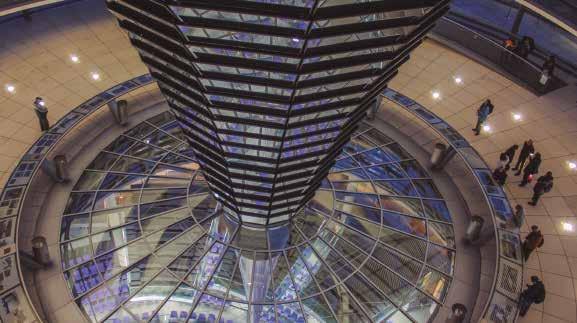
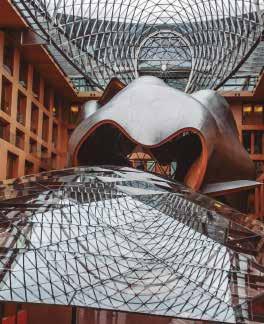
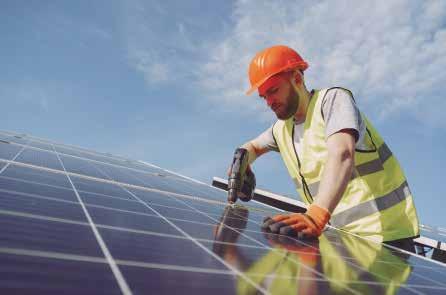
35 LAND & BUILDING
Fotos: Stock
sean aprovechables a plenitud en sus espacios. Finalmen te, que se disminuyan los desechos generados, que haya espacios que permitan la permeabilidad de los suelos y reciclar materiales.
Por lo anterior, para la construcción un factor importan te es la selección del sitio, no solo como explicamos con las construcciones del pasado, si no contemplar también factores ambientales y la necesidad de transporte de los ocupantes, ya que una menor distancia redundara en un menor consumo de combustibles. Considerar la optimi zación del consumo de energía eléctrica y combustibles mediante uso de equipos eficientes de aire acondiciona do, bombas, iluminación y equipo de calentamiento de agua, tratar el agua y reutilizar para ciertos procesos, utilizar energías renovables como son paneles solares fotovoltaicos, calefacción solar de agua, enfriamiento de aguas subterráneas y aprovechar el uso de intercambia dores de temperatura.
Concluyendo quiero establecer que el uso de materiales y la implementación de procesos sustentables en la edifica ción, se han convertido ya en una obligación, debido a que no podemos comprometer los recursos naturales ya que estos no son inagotables. Además debemos evitar la con taminación que representa también un problema mayús culo que afecta nuestra salud y calidad de vida, por ello es inaplazable que desarrolladores, arquitectos e ingenieros y todos quienes participamos en la edificación de proyec tos, consideremos las regulaciones para mejora de los procesos constructivos, el uso de materiales sustentables, aprovechamiento de los recursos naturales y uso eficiente de la energía, partiendo desde la conceptualización, edifi cación y operación. Solo así lograremos un medio ambien te más equilibrado y edificaciones más rentables.
Due to the above, an important factor for construction is the selection of the site, not only as we explained with the constructions of the past, but also considering environmental factors and the need for transportation of the occupants, since a shorter distance would result in less fuel consumption. Consider the optimization of electricity and fuel consumption through the use of efficient air conditioning equipment, pumps, lighting and water heating equipment, treat water and reuse it for certain processes, use renewable energies such as photovoltaic solar panels, solar heating of water, groundwater cooling and take advantage of the use of temperature exchangers.
In conclusion, I would like to establish that the use of materials and the implementation of sustainable processes in construction have already become an obligation, because we cannot compromise natural resources since they are not inexhaustible. In addition, we must avoid pollution, which also represents a major problem that affects our health and quality of life, for this reason it is urgent that developers, architects and engineers and all of us who participate in the construction of projects, consider the regulations to improve construction processes, the use of sustainable materials, use of natural resources and efficient use of energy, starting from the conceptualization, construction and operation. Only in this way will we achieve a more balanced environment and more profitable buildings.
sitio.
Para la construcción un factor importante es la selección del
An important factor for construction is the selection of the site,
TENDENCIA CONSTRUCTIVA
36 LAND & BUILDING




¿Cómo construir siendo amigable con el medio ambiente?
Por Ricardo Reyes
Primero hay que definir qué es amigable. Esto puede te ner muchas y diferentes connotaciones, pero en especifico en materia de desarrollo, hablaremos de amigable como todo aquello que impacte en menor medida al medio am biente, al ecosistema natural, al balance de la naturaleza o su entorno. En resumen, que los procesos o materiales utilizados nos dejen una menor huella de carbono.
¿Cómo integro esto en mis proyectos? Podría ser la cons trucción de mi futura casa, un desarrollo inmobiliario o hasta un parque industrial. La respuesta es más sencilla de lo que parece, y es que el ser socialmente responsa ble tiene que ver con las acciones con las que impactamos nuestro medio ambiente, desde el vehículo que utilizamos hasta el gasto de energía eléctrica o la botella de plástico que tiramos a la basura. En el sector de la construcción,
How to Build with the Environment in Mind

First you must define what is friendly to an environment. This can have many different connotations, but specifically in terms of development, we will speak of friendly as everything that impacts the environment, the natural ecosystem, the balance of nature or its surroundings to a lesser extent. In short, the processes or materials used leave us with a smaller carbon footprint.
How do I integrate this into my projects? It could be the construction of a future home, a real estate development or even an industrial park. The answer is simpler than it seems, and it is that being socially responsible has to do with the actions with which we impact our environment, from the vehicle we use to the use of electricity or the plastic bottle we throw away. The trash. In the construction sector, the situation is further aggravated since the
38 LAND & BUILDING
Fotos: Stock
la situación se agrava más ya que los materiales que uti lizamos o los procesos para obtenerlos se hacen a escala industrial, por tal motivo su impacto es mucho mayor.
En los procesos de manufactura de los materiales de cons trucción, nos encontramos con que muchos de ellos nos impactan negativamente en la vida del planeta. Este tipo de materiales requieren de un proceso industrializado en el cual contaminan demasiado el agua, el subsuelo o nos deja una muy alta huella de carbono. En cambio, los mate riales que son más amigables con el medio ambiente como el cristal o el acero son materiales que podemos utilizar en nuestras construcciones e inclusive reciclarlos al 100%.
En este artículo me gustaría abundar en el acero, el cual es uno de los materiales más resistentes, adaptables y mayor mente utilizados desde los inicios de la historia de la cons trucción y a su vez también es uno de los materiales mas nobles y 100% reciclables. En los procesos constructivos, el acero ha tomado un nuevo curso. Desde inicios del siglo pa sado podemos ver edificios emblemáticos como el Empire State, el Golden Gate, la Torre Latinoamericana y muchos otros que siguen de pie aún con el paso de los años, los te rremotos o con el paso inclusive de la moda. El acero es uno de los materiales más recomendados para la estructura en los procesos constructivos de cualquier nivel.
Con el acero podemos adaptarnos a la arquitectura sus tentable, sostenible y porque no decirlo, a procesos arqui tectónicos que sin él serían imposibles. La arquitectura moderna nos obliga a tener espacios cada vez más lim pios, más amplios e inclusive espacios sin columnas. Hoy en día está mal visto tener espacios confinados y cerra dos. El acero también es uno de los materiales en los que su producción es de las más sencillas, esto quiere decir que, una vez utilizado, su proceso de re-obtención, reci claje o de reutilización es de los más sencillos. Basta con fundirlo y tendrás de nueva cuenta un lingote limpio de acero para ser utilizado en una construcción.
Cuando iniciemos un proyecto del nivel que sea, mi su gerencia es que veamos de dónde vienen los materiales, cómo los obtienen y cuánto le cuesta a la madre natura leza que nos dé cada pieza de ese foco, de esa pintura, de ese ladrillo o de ese tablón de madera. Está en noso tros la responsabilidad de ser cada vez más amigables con el medio ambiente y ser más responsables con el entorno que nos rodea.
materials we use or the processes to obtain them are made on an industrial scale, for this reason their impact is much greater.
In the manufacturing processes of construction materials, we find that many of them have a negative impact on life on the planet. These types of materials require an industrialized process in which they pollute too much water, the subsoil or leave us with a very high carbon footprint. On the other hand, materials that are friendlier to the environment, such as glass or steel, are materials that we can use in our buildings and even recycle them 100%.
In this article I would like to elaborate on steel, which is one of the most resistant, adaptable and most widely used materials since the beginning of the history of construction and, in turn, is also one of the noblest and 100% recyclable materials. In construction processes, steel has taken a new course. Since the beginning of the last century we can see emblematic buildings such as the Empire State, the Golden Gate, the Latin American Tower and many others that are still standing even over the years, earthquakes or even with the passing of fashion. Steel is one of the most recommended materials for the structure in construction processes at any level.

With steel we can adapt to sustainable architecture, sustainable and why not say it, to architectural processes that would be impossible without it. Modern architecture forces us to have increasingly clean, larger and even spaces without columns. Today it is frowned upon to have confined and closed spaces. Steel is also one of the materials in which its production is one of the simplest, this means that, once used, its re-obtaining, recycling or reuse process is one of the simplest. Simply melt it down and you’ll once again have a clean ingot of steel to use for construction.
When we start a project of any level, my suggestion is that we see where the materials come from, how they get them and how much it costs mother nature to give us each piece of that light bulb, that paint, that brick or that wooden plank It is in us the responsibility to be more and more friendly with the environment and to be more responsible with the environment that surrounds us.
39 LAND & BUILDING
¿Cómo integrar la sustentabilidad y el arte?
Por Pedro Gutiérrez
Empezamos este artículo definiendo lo que es sustentabilidad, la cual se entiende como lo “que se puede sustentar o defender con razones”. Un desarrollo sustentable es hacer uso correcto de los recursos actuales sin comprometer los de las generaciones futuras. Significa que los pro cesos sustentables protegen, conservan y pre servan los recursos naturales y actuales.
El arte como una forma de expresión humana, esta integrada a estos procesos pues de ningu na manera ha estado ni estará ajena a preser var dichos recursos. La forma más efectiva de contribuir es educando dentro de su esfera en la concientización de la importancia vital que tiene la compleja problemática, misma que re quiere nuevos tipos de conocimiento y nuevas formas de enseñanza para afrontar en nuestros tiempos los problemas que hay para preservar y desarrollar nuestro mundo.
How to Integrate Sustainability and Art


We begin this article by defining what sustainability is, which is understood as what “can be supported or defended with reasons”. Sustainable development is making correct use of current resources without compromising those of future generations. It means that sustainable processes protect, conserve and preserve natural and current resources.
Art as a form of human expression is integrated into these processes because in no way has it been or will be outside the preservation of these resources. The most effective way to contribute is educating within its sphere in awareness of the vital importance of the complex problem, which requires new types of knowledge and new forms of teaching to face in our times the problems that exist to preserve and develop our world.
Foto: Stock 40 LAND & BUILDING

41 LAND & BUILDING
En México existen diferentes estudios que abordan esta temática como el de la Universidad Autónoma de la Ciu dad de México, (UACM, Hans Dielman). En este se habla de una forma de educación que no solo es el traslado de conocimientos tradicionales, sino un proceso de apertura y restablecimiento de los lazos entre nosotros y el mundo socio-ambiental que nos rodea.
En sustentabilidad hay que saber manejar el pensamien to sistemático y el pensamiento complejo, reconociendo que todo en el mundo esta relacionado. Dichas relaciones no solo son de causa y efecto lineales, sino pensamientos cíclicos con múltiples curvas y retroalimentaciones. Se de ben de usar diferentes tipos de inteligencias para resolver problemas complejos de como interactuamos en nuestras actividades y el medio ambiente. La sustentabilidad se trata de estilos de vivir y formas de ser viéndonos como individuos inmersos en la problemática a resolver y no solo como espectadores.
Esto invita a crear nuevas sociedades y comunidades con diferentes formas de ser, lo que implica imaginar un mundo diferente y pensar en caminos nuevos. Aquí la creatividad y la visión del artista son sumamente impor tantes, por lo que fomentar esta actividad por medio del arte es detonar un pensamiento lateral en lugar de lineal para resolver estas nuevas formas de construir una nue va sociedad y destino.
El arte tiene la capacidad de literalmente ver el mundo de una forma diferente, más compleja, con diferentes niveles de realidad, nivel intelectual/analítico, nivel emocional y nivel sensorial. Tradicionalmente el arte se enfocaba en representar nuestro entorno solamente en paisajes de la naturaleza. En este enfoque temático se mantuvo durante muchos años, después se avanzó, sobre todo en pintura, en la representación de los procesos para aprovechamien to de recursos naturales y actividades humanas como vi llas de pescadores, ciudades y fábricas industriales, cam pesinos, campos agrícolas etc.
A finales de la década de los setenta del siglo pasado, el arte pasó de una relación temática con la sustentabilidad o un desarrollo sustentable, a ser parte del contenido de la obra, al usar materiales reciclados, montar obras en los lugares donde hay explotación desmedida de recur sos, convocando a la población en general a intervenir en una obra retomando el concepto de escultura social de Joseph Beuys, siendo esta forma de expresión una forma de poner a la vista de los más posibles estos temas, pero estando inmersos en la problemática y no solo como una imagen que esta ajena al problema.
Un gran ejemplo de este tipo de arte es el trabajo de Yann Arthus Bertrand, que en el año 2000 empezó a levantar imágenes de la tierra desde el cielo mostrando de golpe la belleza de la tierra al mismo tiempo del daño que estamos creando en prácticamente cualquier parte del mundo.
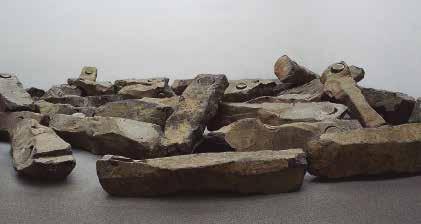
42 LAND & BUILDING ARTE Y DISEÑO
In Mexico there are different studies that address this issue such as that of the Autonomous University of Mexico City, (UACM, Hans Dielman). They describe a form of education that not only involves the transfer of knowledge, but a process of opening and reestablishing the ties between us and the socio-environmental world that surrounds us.
In sustainability, it is necessary to know how to manage systematic thinking and complex thinking, recognizing that everything in the world is related. These relationships are not only linear cause and effect, but cyclical thoughts with multiple curves and feedback. Different types of intelligence must be used to solve complex problems of how we interact in our activities and the environment. Sustainability is about lifestyles and ways of being, seeing ourselves as individuals immersed in the problem to be solved and not just as spectators.
This invites us to create new societies and communities with different ways of being, which implies imagining a different world and thinking of new paths. Here the creativity and vision of the artist are extremely important, so promoting this activity through art is triggering lateral thinking instead of linear thinking to solve these new ways of building a new society and destiny.
Art has the ability to reframe the world in a more complex way, with different levels of reality, intellectual/analytical level, emotional level and sensory level. Traditionally, art focused on representing our environment only in landscapes of nature. This thematic approach was maintained for many years, later progress was made, especially in painting, in the representation of the processes for the use of natural resources and human activities such as fishing villages, cities and industrial factories, peasants, agricultural fields, etc.
At the end of the seventies of the last century, art went from a thematic relationship with sustainability or sustainable development, to being part of the content of the work, by using recycled materials, mounting works in places where there is excessive exploitation of resources, summoning the population in general to intervene in a work taking up the concept of social sculpture by Joseph Beuys, this form of expression being a way of making these issues visible to as many as possible, but being immersed in the problem and not just as an image that is oblivious to the problem.
A great example of this type of art is the work of Yann Arthus Bertrand, who in the year 2000 began to raise images of the earth from the sky, suddenly showing the beauty of the earth at the same time as the damage we are creating in practically any part.
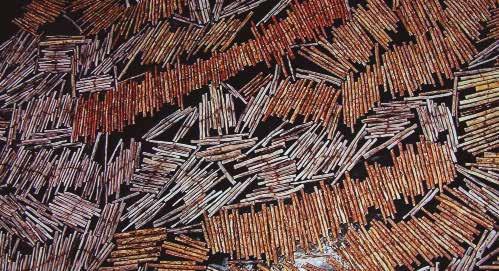
43 LAND & BUILDING ARTE Y DISEÑO
formación Académica
Por Jorge Maldonado
La sustentabilidad en la Sustainability in Academia
La sustentabilidad es una actividad permanente de cam bio, de mejora continua al hábitat urbano y de aportación constante a la conservación sana y evolutiva del ser hu mano y del medio ambiente que lo rodea.
Como origen del concepto de la sustentabilidad, pode mos señalar que “En 1992 se desarrolló la conferencia de Naciones Unidas sobre el Medio Ambiente y el Desarro llo, más conocida como la Cumbre de la Tierra, realizada en Rio de Janeiro, Brasil. Este encuentro reunió a más de 100 jefes de Estado, representantes de 179 gobiernos, así como a representantes de los empresarios, trabajado res, ONGs, organizaciones sociales de mujeres, jóvenes y pueblos indígenas alcanzando un histórico nivel de repre sentatividad y participación” *. Con el arranque de estas acciones, los países y organismos interesados en el tema, coincidieron que los beneficios que se lograrían como con secuencia de la implementación de las acciones propues tas en esta conferencia, impactarían principalmente en la parte económica y social en beneficio del medio ambiente, de tal forma que, al eclipsar estas tres esferas (la econó mica, la social y la medioambiental) la intersección de las mismas se le conocería como sustentabilidad. A partir de ese año la SEDUE, se transformó en la Secretaría de De sarrollo Social (Sedesol) y se creó el Instituto Nacional de Ecología (INE) y la Procuraduría Federal de Protección al Ambiente (Profepa).
También en esa época, las instituciones académicas del país, incorporaron en los programas académicos de las carreras correspondientes a la industria de la transfor mación, temas como sustentabilidad, cuidado del medio ambiente o conservación de hábitat para el ser humano.
Particularmente en la carrera de Arquitectura, se tratan temas como la innovación de edificios verdes, en donde se discuten temas referentes a las tendencias actuales
Sustainability is a permanent activity of change, continuous improvement to the urban habitat and constant contribution to the healthy and evolutionary conservation of the human being and the environment that surrounds him.
As the origin of the concept of sustainability, we can point out that “In 1992 the United Nations Conference on Environment and Development was held, better known as the Earth Summit, held in Rio de Janeiro, Brazil. This meeting brought together more than 100 heads of state, representatives of 179 governments, as well as representatives of employers, workers, NGOs, social organizations of women, youth and indigenous peoples reaching a historic level of representativeness and participation” *. With the start of these actions, the countries and organizations interested in the subject, agreed that the benefits that would be achieved as a result of the implementation of the actions proposed in this conference, would mainly impact on the economic and social part for the benefit of the environment, in such a way that, by eclipsing these three spheres (the economic, the social and the environmental) the intersection of them would be known as sustainability. From that year the SEDUE, was transformed into the Secretariat of Social Development (Sedesol) and the National Institute of Ecology (INE) and the Federal Attorney for Environmental Protection (Profepa) were created.
Also at that time, the academic institutions of the country, incorporated in the academic programs of the careers corresponding to the transformation industry, topics such as sustainability, care of the environment or conservation of habitat for the human being.
Particularly in architecture, topics such as the innovation of green buildings are discussed, where topics related to

44 LAND & BUILDING
Foto:
ACA DÉ MICA
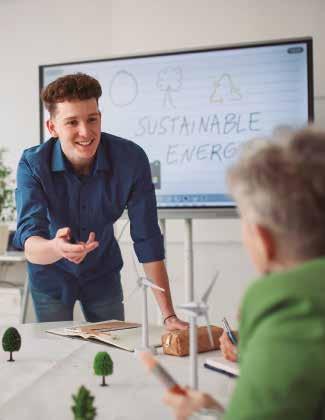
AG EN DA Stock 45 LAND & BUILDING
en la construcción de edificaciones y construcciones ur banas. Como resultado de lo anterior, dentro de una llu via de ideas, alumnos y profesores de la UVM, han coin cidido que las principales tendencias en los proyectos arquitectónicos son:
1) Energía Eficiente por medio de certificaciones como: Ac tive House; Breeam; Casbee; DGNB; Green Globes; Green Sta; HQE; LBC; LEED (que es la más popular en México por su cercanía a EU); Nabers; Nordic Swan y Well entre otras.
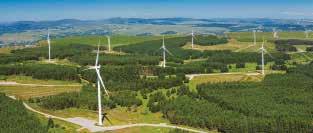
2) Edificaciones “ZEB” Zero-Energy-Building, que com binan aspectos de optimización de diseño con el uso de tecnologías de gestión energética, materiales verdes y fuentes de autogeneración como paneles solares o gene radores eólicos de pequeñas dimensiones para reducir su consumo global de electricidad hasta un punto en el cual, este pueda depender de su propia infraestructura.
3) Techos Verdes: Este tipo de cubiertas protegen al edifi cio en su piso más expuesto (quinta fachada), el que recibe mayor calor en verano y frío en el invierno. La tierra fun ciona como amortiguador de la temperatura, reduciendo las pérdidas y ganancias excesivas de temperatura según la época del año.
4) Paridad de Red: Concepto que va de la mano del auto consumo y el balance neto, por paridad de red (en inglés grid parity) entendemos la coincidencia entre el costo de producir un KWh directamente en un punto de consumo y el costo de otro KWh suministrado por la red en ese mis mo punto de consumo.
5) Bioconcreto: Éste comprende el uso de bacterias, que al producirse una grieta en la estructura con la humedad del ambiente se activan y comienzan a alimentarse, siendo así como por medio del proceso digestivo, producto de su metabolismo se expulsa como el material necesario para rellenar la grieta, en un lapso que está determinado por la relación del largo y grosor de la misma.
6) Diseño Generativo: El diseño generativo en la arquitec tura y la construcción pone a trabajar a las computadoras, modelando estrategias de construcción, no solo para re presentar estructuras, sino también para cocrearlas.
Estas tendencias son solo el inicio de una serie de pro puestas que se realizan en las universidades para dar seguimiento y consolidación al tema de la sustentabili dad en las construcciones de la ingeniería y la arquitec tura. Será responsabilidad de las nuevas generaciones el desarrollar nuevos sistemas de mitigación ambiental, ya que como lo expuse al inicio de este artículo, “La sus tentabilidad es una actividad permanente de cambio, de mejora continua al hábitat urbano y de aportación cons tante a la conservación sana y evolutiva del ser humano y del medio ambiente que lo rodea”.
*Larrouyet María Cristina Desarrollo Sustentable: origen, evolución y su implementación para el cuidado del planeta
AGENDA ACADEMICA
46 LAND & BUILDING
current trends in the construction of buildings and urban constructions are discussed. As a result of the above, within a brainstorm, students, and professors of the UVM, have agreed that the main trends in architectural projects are:
1) Energy Efficient through certifications such as: Active House; Breeam; Casbee; DGNB; Green Globes; Green Sta; HQE; LBC; LEED (which is the most popular in Mexico because of its proximity to the US); Nabers; Nordic Swan and Well among others.
2) Zero-Energy-Buildings, which combine aspects of design optimization with the use of energy management technologies, green materials, and self-generation sources such as solar panels or small wind generators to reduce their overall electricity consumption to a point where it can depend on its own infrastructure.
3) Green Roofs: This type of roof protects the building on its most exposed floor (fifth façade), the one that receives the most heat in summer and cold in the winter. The earth functions as a temperature buffer, reducing excessive temperature losses and gains depending on the time of year.
4) Network Parity: Concept that goes hand in hand with self-consumption and net balance, by grid parity we understand the coincidence between the cost of producing a KWh directly at a point of consumption and the cost of another KWh supplied by the network at that same point of consumption.
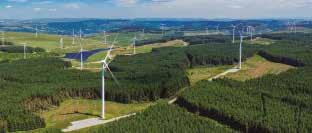
5) Bio concrete: This includes the use of bacteria, which when a crack occurs in the structure with the humidity of the environment are activated and begin to feed, being thus as well as through the digestive process, product of its metabolism is expelled as the necessary material to fill the crack, in a period that is determined by the relationship of the length and thickness of it.
6) Generative Design: Generative design in architecture and construction puts computers to work, modeling construction strategies, not only to represent structures, but also to co-create them.
These trends are just the beginning of a series of proposals that are made in universities to monitor and consolidate the issue of sustainability in engineering and architecture constructions. It will be the responsibility of the new generations to develop new environmental mitigation systems, since as I explained at the beginning of this article, “Sustainability is a permanent activity of change, of continuous improvement to the urban habitat and of constant contribution to the healthy and evolutionary conservation of the human being and the environment that surrounds him”.
*Larrouyet María Cristina Sustainable Development: origin, evolution, and its implementation for the care of the planet
AGENDA ACADEMICA
47 LAND & BUILDING
Foto: Stock
Diferencia entre sustentabilidad y sostenibilidad

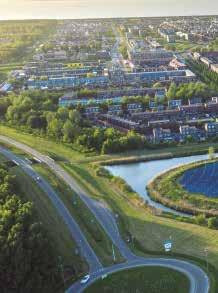 Por Alejandro Rodríguez
Por Alejandro Rodríguez
Hablando recientemente en una reunión, en la cual se pretendía definir temas para una exposición, surgió un verdadero debate sobre la palabra a utilizar en uno de ellos: Desarrollo sostenible o desarrollo sustentable. ¿Cuál es la diferencia entre sustentabilidad y sostenibi lidad? Dentro del debate, surgen preguntas como: ¿se deberá preservar solo los recursos naturales?, ¿acaso no se debe preservar la cultura, las necesidades sociales y la economía del ser humano?
La concepción de “desarrollo sustentable” aparece por pri mera vez en 1972 significando que es un “proceso por el cual se preservan los recursos naturales en beneficio de las generaciones presentes y futuras”. Posteriormente, se consideró que ya no era solo “la preservación de los recur sos naturales” sino también “la conservación y protección del medio ambiente y dentro de este los recursos natura les de manera de no comprometer las expectativas de las generaciones futuras”.
Si el medio ambiente ya no podría sustentar la vida, se debía buscar otras formas para que las generaciones se beneficien de los recursos. La sustentabilidad debía du rar en el tiempo, debía hacerse sostenible. Las cosas que dan sustento a la vida deben también durar en el tiem po, deben ser sostenibles. Y nuevamente en este punto, la pregunta: ¿Acaso no se debe preservar la cultura, las necesidades sociales, la economía del ser humano?
Entonces, en resumen, el desarrollo sustentable es el proceso por el cual se preserva, conserva y protege solo los recursos naturales para el beneficio de las genera ciones presentes y futuras, sin tomar en cuenta las ne cesidades sociales, políticas ni culturales del ser humano al cual trata de llegar el desarrollo sostenible, que es el proceso mediante el cual se satisfacen dichas necesida des preservando un medio ambiente sano para la actual generación y las futuras.
48 LAND & BUILDING
Foto: Stock
Difference between sustainability and sustainable
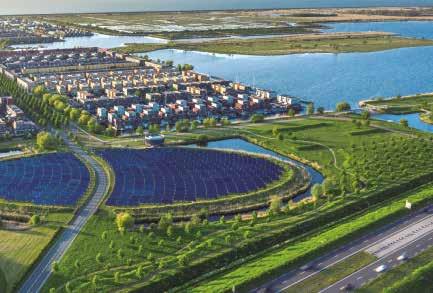
Speaking recently at a meeting that was intended to define topics for an expo, a real debate arose about the word to be used in one of them: Sustainability or sustainable development. What is the difference between sustainability and renewable? Within the debate, questions arise such as: should only natural resources be preserved? Should the culture, social needs and economy of the human being also be preserved?
The conception of “sustainable development” first appears in 1972 meaning that it is a “process by which natural resources are preserved for the benefit of present and future generations.” Subsequently, it was considered that it was no longer only “the preservation of natural resources” but also “the conservation and protection of the environment and within the resources’ ecosystem so as not to compromise the expectations of future generations.”
If the environment could no longer sustain life, other ways had to be found for later generations to benefit from resources. Sustainability had to last over time, it had to be made sustainable. The things that sustain life must also last over time, they must be sustainable. And again, at this point, the question remained: Shouldn’t the culture, the social needs, the economy of the human being also be preserved?
So, in short, sustainability is the process by which only natural resources are preserved, conserved and protected for the benefit of present and future generations, without taking into account the social, political or cultural needs of the human being to whom sustainable development tries to reach, which is the process by which these needs are met by preserving a healthy environment for the current and future generations.
AGENDA ACADEMICA
49 LAND & BUILDING
Perspectivas hacia el 2050
Por Felix Fernández
Como sociedad y como gremios en el mundo in mobiliario, los retos a los que nos enfrentamos siguen allí, exactamente frente a nosotros mis mos, en nuestros desarrollos, nuestros edificios, nuestras obras. El reto sigue siendo el mismo: los inmuebles del mundo son generadores del 40% de CO2 que se emite.
El problema está claro y podríamos dividirlo a manera de simplificación en tres partes:
• La ubicación desde la concepción de nuestros proyectos inmobiliarios.
• La realización de esos proyectos en términos de obras de construcción, afectación y reposición de espacios medioambientales, incorporación de tecnologías eco sustentables; y
•Operación de los inmuebles con filosofía RSU = 0
La manera de agrupar o clasificar los temas no es lo importante, y la clasificación es tan buena
Perspectives towards 2050

As a society and as guilds in the real estate world, the challenges we face are still there, right in front of us, in our developments, our buildings, our works. The challenge remains the same: the world’s buildings generate 40% of CO2 emissions.
The problem is clear, and we could divide it by way of simplification into three parts:
• The location from the planning stages of our real estate projects.
• The realization of these projects in terms of construction works, effects on and replacement of environmental spaces, incorporation of ecosustainable technologies; and

• Operation of real estate with RSU philosophy = 0
The way to group or classify the issues is not important, and the classification is as good as any other if you can see a map of the issues to be resolved.
Foto: Stock
50 LAND & BUILDING
TECNO LOGÍAS EC O
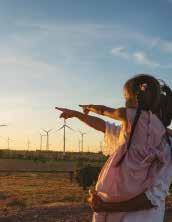
51 LAND & BUILDING




como cualquier otra mientras pueda verse un mapa de los temas a resolver.
¿Cuánto de sus beneficios estaría dispuesto un desarro llador, o un constructor, a aportar a un fondo que estudie, investigue, seleccione e implemente mejores prácticas en el entorno de sus desarrollos, las cuales vayan mejorando las condiciones de desarrollos existentes y futuros?
Y no hablo aquí de gratuidad solamente. En realidad, el tema de la sustentabilidad termina siendo un buen nego cio para todos los involucrados desde el desarrollo hasta los tenedores y los usuarios, en varios sentidos.
Hoy estamos en el punto en que desarrollar y habitar de manera sustentable los inmuebles y las ciudades no es so lamente para los grandes o los desarrollados. Es para los pequeños, medianos y grandes empresarios, es para los habitantes de ciudades pequeñas y grandes, con econo mías desarrolladas o en desarrollo. Y cada día que pasa es mas obligatorio, tan obligatorio como oxígeno disponible quiera cada habitante del mundo dejar a sus descendien tes de los próximos 50 o 100 años.
Existen muchas ideas al respecto de materiales mas eco amigables que pueden usarse en edificaciones. Muchas han sido usadas con éxito, otras funcionan de manera deficiente o menos económica; pero es indispensable usarlas, probar, desarrollar esos u otros materiales para lograr su uso más eficiente y eco responsable. Con esto no estoy diciendo nada nuevo, así es como se ha llegado a los materiales, equipamientos y procesos con los cua les hoy edificamos; a través del método prueba, error, perfeccionamiento.
Desde la actualidad un desarrollador de tamaño Pyme ya tiene a su alcance la posibilidad de plantear complejos con algunas características como las siguientes:
• Un terreno no invasivo con el entorno, el cual a la vez tenga bien planteado el acceso y salida vehicular de modo que produzca cero impactos viales, y que reponga a través de ecotecnologías la cantidad de oxígeno que se generaría en el terreno natural (como si no se fuera a edificar).
How much of their profits would a developer, or a builder, be willing to contribute to a fund that studies, investigates, selects, and implements best practices in the environment of their developments, which improve the conditions of existing and future developments?
And I’m not just talking about free here. The topic of sustainability ends up being a good deal for everyone involved from development to stakeholders and users, in several ways.
Today we are at the point where developing and inhabiting buildings and cities in a sustainable manner is for the large or the developed. It is for small, medium, and large entrepreneurs, it is for the inhabitants of small and large cities, with developed or developing economies. And every day that passes is more mandatory, as mandatory as available oxygen wants each inhabitant of the world to leave their descendants in the next 50 or 100 years.
There are many ideas about more ecofriendly materials that can be used in buildings. Many have been used successfully, others work poorly or less economically, but it is essential to use them, test, develop these or other materials to achieve their most efficient and ecoresponsible use. With this I am not saying anything new, this is how the materials, equipment, and processes with which we build today have been reached, through trial, error, refinement.
From now on, an SME-sized developer already has within his reach the possibility of proposing complexes with some characteristics such as the following:
• A land that is non-invasive with the environment, which at the same time has well-planned vehicular access and exit so that it produces zero road impacts, and that replenishes through eco-technologies the amount of oxygen that would be generated in the natural land (as if was not going to be built).
• That the construction be carried out with less aggressive materials in their manufacture or that contain some component of recycled waste, and that at the same time
ECO TECNOLOGÍAS
53 LAND & BUILDING
• Que la construcción se realice con materiales menos agresivos en su fabricación o que contengan algún com ponente de residuos reciclados, y que a la vez produzcan beneficios mayores en cuanto absorción térmica, de ilumi nación, entre otros.
• Y también podría usar equipamiento alternativo a los convencionalmente instalados, como lo son, bombas hi dráulicas de corriente directa que usan paneles solares para funcionar, sistemas de generación de energía (pa neles solares, mini torres eólicas), reúso de aguas grises, tratamiento in situ de aguas residuales, separación y di gestión de basuras para generación de electricidad o de gas natural, etc.
Algunas de estas prácticas y de estos elementos (más una infinidad de otros que no cabrían en un artículo) impacta rían en el costo de construcción si se compara contra los parámetros acostumbrados, pero también producen tan to beneficios en reducción de costos de operación, como aumento en la habitabilidad del espacio; además, por su puesto, que implican la conciencia de estar haciendo lo que se puede hacer para ganar un poco de oxígeno dispo nible a las futuras generaciones. Y esto los compradores hoy lo pagan diferente, incluso en niveles populares, en los cuales las hipotecas verdes son más frecuentes.
Todo parte de la convicción de hacer diferente, a partir de, como he dicho en otros artículos sobre este mismo tema, comprender que estamos obligados a hacer un cambio de mentalidad. El primer día del camino al 2050 o al 2150 es hoy. Los habitantes del próximo siglo nos lo van a agradecer.
produce greater benefits in terms of thermal absorption, lighting, among others.
• And it could also use alternative equipment to those conventionally installed, such as direct current hydraulic pumps that use solar panels to function, power generation systems (solar panels, mini wind towers), gray water reuse, on-site treatment of wastewater, separation, and digestion of garbage for the generation of electricity or natural gas, etc.
Some of these practices and elements (plus an infinity of others that would not fit in an article) would impact the cost of construction when compared against the usual parameters, but they also produce benefits in terms of reducing operating costs, as well as increasing the habitability of space; in addition, of course, that they imply the awareness of doing what can be done to gain a little oxygen available to future generations. And this is what buyers today pay differently, even at popular levels, in which green mortgages are more frequent.
Everything starts from the conviction of doing something different, starting from, as I have said in other articles on this same topic, understanding that we are obliged to make a change in mentality. The first day on the road to 2050 or 2150 is today. The inhabitants of the next century will thank us.
There are many ideas about more ecofriendly materials that can be used in buildings.
ECO TECNOLOGÍAS
Existen muchas ideas al respecto de materiales mas eco amigables que pueden usarse en edificaciones.
54 LAND & BUILDING
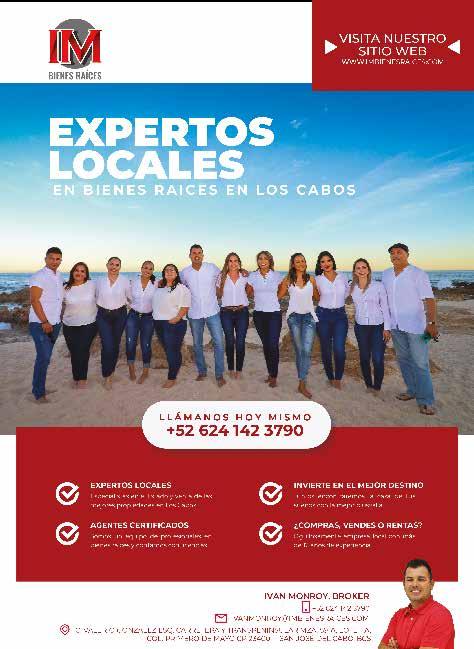
¿Qué es el greenwashing?
Por Mauricio Anaya
La globalización ha contribuido a que la información esté al alcance de muchos con tan solo un clic, pero eso también conlleva la responsabilidad de estar bien informados y saber qué hacer y qué no hacer para estar bien con uno mismo, con la sociedad y con el planeta.

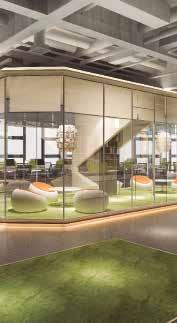
La palabra sustentabilidad y todos sus conceptos derivados están de moda, esto se debe a que los humanos nos hemos dedicado a explotar los recursos naturales y llevar a cabo acciones que han resultado en un cambio climático inminente y ahora buscamos revertirlo a como dé lugar.
Como toda moda, muchos lo han incorporado a su estilo de vida y buscan consumir todo lo relacionado a la sustentabilidad, pero hay que tener cuidado y ser muy crítico porque pudiéramos ser víctimas de la mercadotecnia, específicamente del greenwashing que se refiere a la práctica que toman algunas empresas u organizaciones para aparentar se amigables con el medio ambiente cuando en realidad no lo son y simplemente se cuelgan de una imagen de que son sustentables de manera fraudulenta.
Una forma de acabar con el greenwashing es analizando nuestras propias acciones, del día a día y adecuar nuestros hábitos de consumo para llevar una vida amigable con el ambiente. Un ejemplo claro son los utensilios desechables que dicen ser biodegradables y en ocasiones no lo son, pero los compramos porque tienen un sello que dice ecofriendly u alguna otra artimaña de la mercadotecnia, y además para sentirnos bien con nosotros mismos cuando la verdadera solución sería no usar o usar lo menos posible los desechables, ya sean biodegradables o no.
Es nuestra responsabilidad como consumidores acabar con el greenwashing y dejar que lo sustentable sea una moda pasajera, se quede para siempre y se practique de la manera correcta.
56 LAND & BUILDING
What is greenwashing?
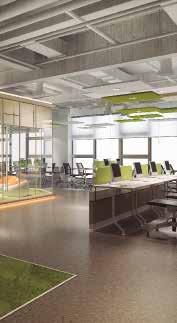
Globalization has contributed to making information available to many with just one click, but that also carries with it the responsibility of being well informed and knowing what to do and what not to do to be well with oneself, with society and with the planet.
The word sustainability and all its derived concepts are fashionable, this is because humans have dedicated ourselves to exploit natural resources and carry out actions that have resulted in imminent climate change and now we seek to reverse it as it happens.
Like all fashion, many have incorporated it into their lifestyle and seek to consume everything related to sustainability, but we must be careful and be very critical because we could be victims of marketing, specifically greenwashing that refers to the practice that some companies or organizations take to appear friendly to the environment when they are not and simply hang on an image that they are fraudulently sustainable.
One way to end greenwashing is by analyzing our own actions, day to day and adapting our consumption habits to lead an environmentally friendly life. A clear example is disposable utensils that claim to be biodegradable and sometimes are not, but we buy them because they have a seal that says ecofriendly or some other marketing ruse, and also to feel good about ourselves when the real solution would be not to use or use as little as possible disposables, whether they are biodegradable or not.
It is our responsibility as consumers to end greenwashing and let sustainable be a passing fad, stay forever and practice it in the right way.
ECO TECNOLOGÍAS Foto: Stock 57 LAND & BUILDING
¿Cómo crear un espacio sustentable?
 Por Francisco Vargas
Por Francisco Vargas
Sustentabilidad en México, es un concepto efímero que, aun que esta en boca dentro del desarrollo inmobiliario dese hace mas de tres décadas, su actual interpretación e implementa ción es ambigua. El concepto fue presentado por primera vez de manera mundial en el informe ¨Nuestro Futuro Común¨ transmitido en la Asamblea General de la Comisión Mundial del Medio Ambiente por Gro Harlem Brundtland, también conocido como Informe Brundtland en el que además de ca tegorizar, ordenar y definir la sustentabilidad, describe la ac tualidad de hace 30 años y el futuro que debemos perseguir en pro de lograr que las siguientes generaciones tengan un futuro por vivir.
Después de entender este reporte, es imposible no hacer conciencia de lo que estamos haciendo y de lo que debemos hacer. La pregunta es ¿porqué no vemos un plan de acción mas certero puesto en marcha? La respuesta tiene que ver con las prioridades que tenemos y lo que creemos que es una necesidad real y una necesidad abstracta: la sustentabilidad.
How to create a sustainable space
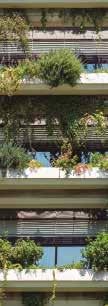
Sustainability in Mexico is an ephemeral concept that, although it has been on the lips of real estate development for more than three decades, its current interpretation and implementation is ambiguous. The concept was presented for the first time worldwide in the report “Our Common Future” transmitted at the General Assembly of the World Commission on the Environment by Gro Harlem Brundtland, also known as the Brundtland Report, in which, in addition to categorizing, ordering and defining Sustainability describes the present of 30 years ago and the future that we must pursue in order to ensure that the following generations have a future to live.
After understanding this report, it is impossible not to be aware of what we are doing and what we must do. The question is why don’t we see a more accurate action plan put
Foto: Stock 58 LAND & BUILDING
La necesidad o llamémosla prioridad es CAPEX, el princi pal freno del desarrollo sustentable ya que vemos a lo sus tentable como un gasto extraordinario. Cada casa magni fica que se construye, desarrollo inmobiliario, edificio de departamentos y oficinas, plazas comerciales y hospitales que no son 100% sustentables contribuyen activamente al cambio climático y a que finalmente nos terminemos los recursos no renovables.
Debemos no solamente por nosotros y por aprovecharnos en el corto plazo también de un menor OPEX, si no por las futuras generaciones: hijos de nuestros hijos. Es inmi nente un cambio de prioridades y la creación de nuestros espacios sustentables.
Paso 1 - La carga
Conocer y controlar las cargas eléctricas es el principal ob jetivo. Aplicar los métodos arquitectónicos para disminuir el intercambio de temperatura entre el exterior y el inte rior y el uso de tecnología moderna y eficiente, lograrán que nuestras máquinas y equipos para darnos confort, consuman la menor cantidad de energía posible.
Porcentaje
Aire Acondicionado 70%
Cambio a equipos INVERTER mínimo SEER 18. Usar a no menos de 24ºC. Tratar de usar durante horas de sol 61 Filtración de Albercas 7% Usar equipos de velocidad variable. 5
Calefacción de Agua 4%
Usar equipos eléctricos de paso, no usar por más de 5 min por ducha. 3 Iluminación 3% Usar LEDs 3W a 7W máximo. 2
Tratamiento de Agua 7% Programar durante horas de asoleamiento. 6
Refrigeradores 3% Usar Equipos INVERTER. 4 Bombeo de Agua 3% Usar equipo de velocidad variable. 3
Ventilación 2% Usar Equipos INVERTER. 2 Otros 1% Usar equipo LED, Qled. 2
in place? The answer has to do with the priorities that we have and what we believe to be a real need and an abstract need: sustainability.
The need or let’s call it a priority is CAPEX, the main brake on sustainable development since we see sustainability as an extraordinary expense. Every magnificent house that is built, real estate development, apartment and office building, shopping malls and hospitals that are not 100% sustainable actively contribute to climate change since we finally run out of non-renewable resources.
We must not only for ourselves and for taking advantage of a lower OPEX in the short term, but also for future generations: our children’s children. A change of priorities and the creation of our sustainable spaces is imminent.
Step 1 - The load
Knowing and controlling electrical loads is the main objective. Applying architectural methods to reduce the exchange of temperature between the exterior and interior and the use of modern and efficient technology
Percentage of Consumption Action Area required
Air Conditioning 70% Change to INVERTER equipment minimum SEER 18. Use at no less than 24ºC. Try to use during sunny hours 61
Pool Filtration 7% Use variable speed equipment. 5
Water Heating 4% Use electrical equipment, do not use it for more than 5 min per shower. 3
Lighting 3% Use LEDs 3W to 7W maximum. 2
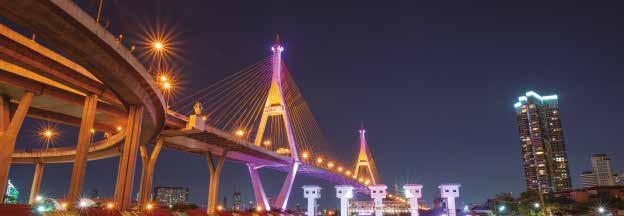
Water Treatment 7% Program during sunny hours. 6
Refrigerators 3% Use INVERTER equipment. 4
Water Pumping 3% Use variable speed equipment. 3
Ventilation 2% Use INVERTER Equipment. 2 Other 1% Use LED equipment, Qled. two
de Consumo Acción Área requerida
ECO TECNOLOGÍAS 59 LAND & BUILDING
Paso 2 - La independencia
La descentralización de los consumos eléctricos mitiga al 100% los actuales y futuros problemas técnicos de la infraestructura eléctrica, disminuye el crecimiento de la demanda eléctrica, y termina por completo con el pro blema del consumo de energía por medio de fuentes fó siles por dos décadas, momento en el que las baterías deberán ser reemplazadas.
Conclusión
Ante la problemática de la sobrecarga de las líneas de ali mentación eléctrica y las plantas existentes generadoras de energía eléctrica que consumen principalmente com bustibles fósiles, convertir un espacio 100% independien te de cualquier otra fuente de energía no renovable es la tendencia mundial y la manera de convertir un espacio en sustentable dado el impacto que tiene la contaminación por la liberación de CO2 al cambio climático.
Hacer todos o alguno de nuestros espacios sustentables, aportan a lograr que la actual red de suministro eléctrico opere con menos carga, al no tener que producir la ener gía que ahora es independiente, pone energía a disposi ción de un mayor número de habitantes que quizás antes o no la tenían o la tenían de manera limitada y esporádica.
will ensure that our machines and equipment consume the least amount of energy possible to give us comfort.
Step 2 - Independence
The decentralization of electrical consumption mitigates 100% of current and future technical problems of the electrical infrastructure, decreases the growth of demand electricity, and completely ends the problem of energy consumption by means of fossil sources for two decades, at which point the batteries will have to be replaced.
Conclusion
Given the problem of overloading power lines and existing power generation plants with electricity that mainly consume fossil fuels, making a space 100% independent of any other non-renewable energy source is the world trend and the way to make a space sustainable given the impact of pollution due to the release of CO2 on climate change.
Making all or some of our spaces sustainable contributes to making the current electricity supply network operate with less load, by not having to produce the energy that is now independent, making energy available to a greater number of inhabitants than perhaps before or they didn’t have it, or they had it in a very sporadic capacity.
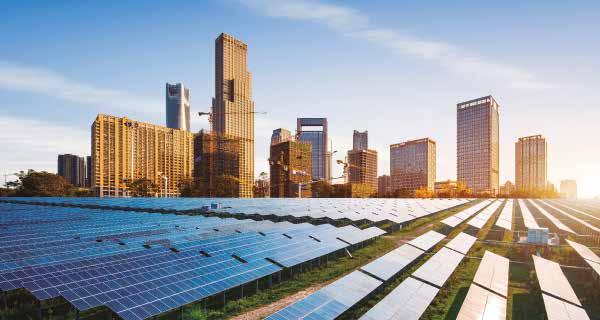
ECO TECNOLOGÍAS
60 LAND & BUILDING
Foto: Stock
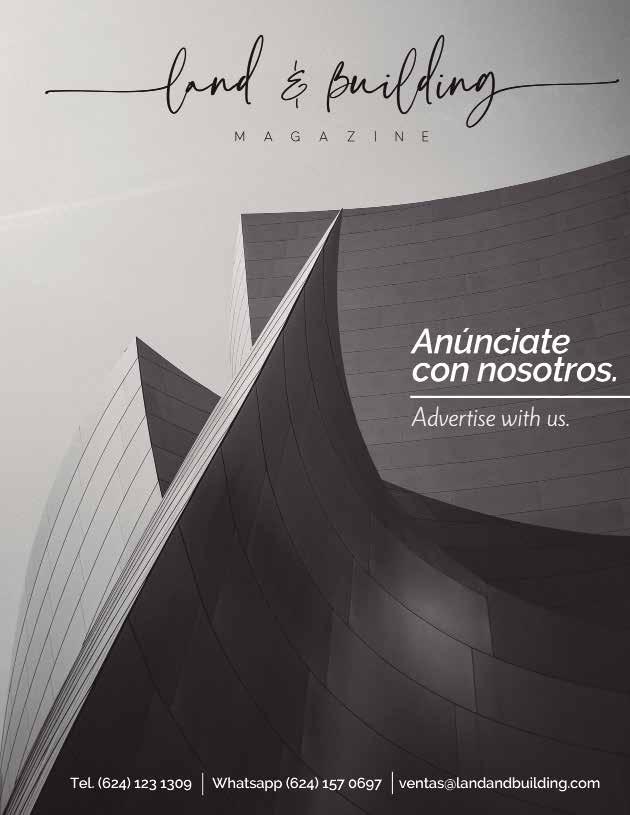
¿Qué es el
urbanismo táctico?
What is tactical urbanism

De acuerdo con el Programa de las Naciones Unidas para los Asentamientos Humanos (ONU HABITAT) el urbanismo táctico ha demostrado ser una herramienta de gran utilidad para la im plementación de acciones emergentes de bajo costo y de ágil implementación, que pueda dar respuesta a las necesidades de adecuación de los espacios públicos de las ciudades.

En este sentido, el urbanismo táctico son in tervenciones esencialmente temporales que permiten constituirse como proyectos demos trativos de aplicación de políticas públicas de movilidad urbana, seguridad vial, recuperación de espacio público, imagen urbana, cultura, en tre otras. Como proyectos demostrativos, una vez evaluado el impacto que estas intervencio nes generan, permiten en su caso, valorar o to mar la decisión de volverlos proyectos de obra pública permanente.
According to the United Nations Human Settlements Program (UN HABITAT), tactical urbanism has proven to be a very useful tool for the implementation of low-cost and quick application actions that can give response to the adaptation needs of public spaces in cities.
In this sense, tactical urbanism is essentially temporary interventions that allow them to be constituted as demonstrative projects for the application of public policies on urban mobility, road safety, recovery of public space, urban image, culture, among others. As demonstration projects, once the impact generated by these interventions has been evaluated, they allow, where appropriate, to assess or make the decision to turn them into permanent public works projects.
Por Ussiel García Foto: Stock
62 LAND & BUILDING
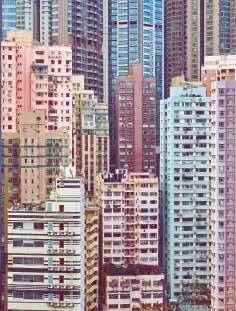
63 LAND & BUILDING
Una de las características principales del urbanismo tácti co es su vertiente de involucramiento o participación ciu dadana durante la fase de formulación e implementación. Este tipo de intervenciones han adquirido popularidad en diversas ciudades del mundo y de México, que de alguna manera tienen un sentido de inspiración de buenas prác ticas y que estas puedan ser un catalizador de proyectos futuros con mayor impacto.
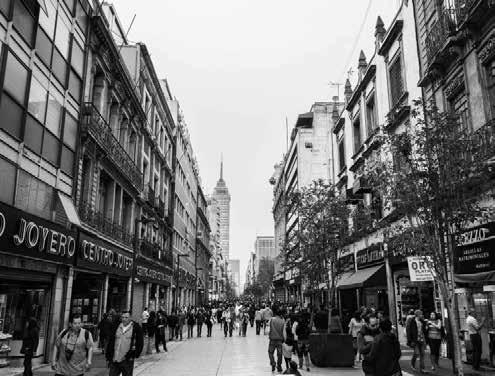
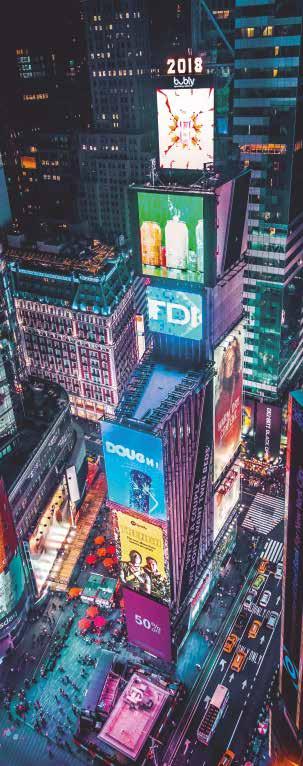
Existen gran diversidad de intervenciones exitosas que tuvieron un origen de urbanismo táctico, que llevaron posteriormente a obras de un gran impacto social, cul tural y económico. En su momento, casos como la trans formación de Times Square en Nueva York de una álgida intersección vehicular en una zona peatonal dedicada a la cultura, convivencia y comercio; la ocupación de puestos de estacionamiento en calles de San Francisco con el em plazamiento de los denominados parques de bolsillo; o la calle Madero del Centro Histórico de la Ciudad de México en un corredor peatonal.
En cuanto a los promotores de las intervenciones de urba nismo táctico, si bien han sido en muchos casos actores de la sociedad civil o activistas, desde luego que el rol de los actores gubernamentales es fundamental e incluso per mite un mayor alcance y efectos de replicación.
AGENDA URBANA 64 LAND & BUILDING
One of the main characteristics of tactical urbanism is the aspect of citizen involvement or participation during the formulation and implementation phase. These types of interventions have gained popularity in various cities around the world and in Mexico, which in some way have a sense of inspiration for good practices and that these can be a catalyst for future projects with greater impact.
There is a great diversity of successful interventions that had an origin of tactical urbanism, which later led to works of great social, cultural, and economic impact. At the time, cases such as the transformation of Times Square in New York from a critical vehicular intersection into a pedestrian zone dedicated to culture, coexistence, and commerce; the occupation of parking spaces on the streets of San Francisco with the placement of so-called pocket parks; or Madero Street in the Historic Center of Mexico City in a pedestrian corridor.
As for the promoters of tactical urban planning interventions, although in many cases they have been civil society actors or activists, of course the role of government actors is fundamental and even allows for greater scope and replication effects.
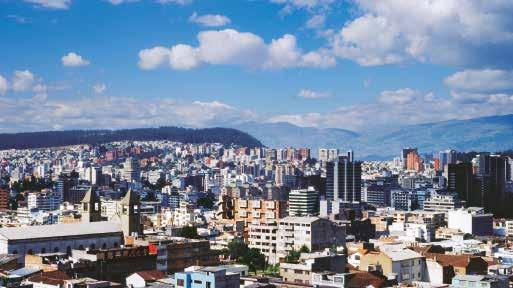
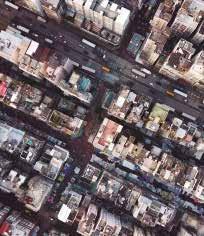
AGENDA URBANA
65 LAND & BUILDING
Debemos reconocer que estas intervenciones rara vez en la comunidad en su conjunto está de acuerdo en llevarlas a cabo y han presentado incluso un rechazo inicial o diver sos inconvenientes o resistencia al cambio. No obstante, la lógica del urbanismo táctico es que, si un proyecto es de interés público y beneficio colectivo, la posibilidad de so cialización, demostración y adaptación a las necesidades de la comunidad permitirá mejores condiciones de viabi lidad y abordar estas resistencias para lograr su apropia ción y futuro escalamiento.
El pasado diciembre de 2021 se llevó a cabo el Primer Con greso Internacional de Urbanismo Táctico, el cual reunió a ocho países de tres continentes quienes mostraron sus experiencias y retos, compartieron metodologías, meca nismos de difusión e intercambio de prácticas.
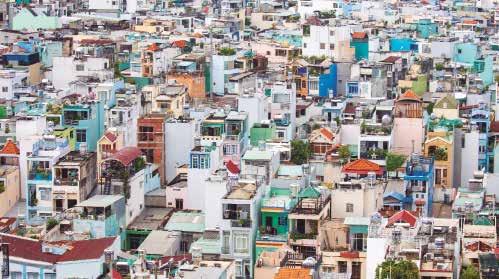
El urbanismo táctico como intervenciones de pequeña es cala, representa una oportunidad para dar a conocer a la ciudadanía los principios de la agenda urbana sustenta ble y que estos puedan ser replicados, madurados e inte grados de manera permanente al resto de la ciudad. En este sentido, los retos urbanos de nuestras ciudades son profundos y de carácter estructural, pero toda aportación suma para hacer ciudades más habitables y humanas.
We must recognize that these interventions are rarely agreed upon by the community as a whole and have even presented an initial rejection or various drawbacks or resistance to change. However, the logic of tactical urbanism is that, if a project is of public interest and collective benefit, the possibility of socialization, demonstration, and adaptation to the needs of the community will allow better viability conditions and address this resistance to achieve its appropriation and future escalation.
Last December 2021, the First International Congress of Tactical Urbanism was held, which brought together eight countries from three continents who showed their experiences and challenges, shared methodologies, dissemination mechanisms and exchange of practices.
Tactical urbanism as small-scale interventions represent an opportunity to inform citizens of the principles of the sustainable urban agenda and that these can be replicated, matured, and permanently integrated into the rest of the city. In this sense, the urban challenges of our cities are profound and of a structural nature, but every contribution adds up to make cities more habitable and humane.
AGENDA URBANA
66 LAND & BUILDING
Foto: Stock
Agenda
Por Ussiel García
En 2019, la Organización de las Naciones Unidas (ONU) daba a conocer su más reciente estimación sobre el au mento de la población mundial en 2 mil millones de per sonas en los próximos 30 años, lo que significa pasar de 7 mil 700 millones de habitantes en la actualidad a 9 mil 700 millones para el año 2050 .
Teniendo en cuenta lo anterior, el Programa de Naciones Unidas para los Asentamientos Humanos (ONU HABITAT), estima que actualmente poco más de la mitad de la po blación mundial vive en ciudades y que para el año 2050 podría alcanzar hasta un 70%, lo que significa que, en tér minos prácticos, 3 de cada 4 habitantes del mundo se de sarrollarán en el medio urbano.
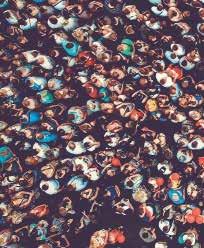
Lo anterior, trae consigo una serie de oportunidades para las ciudades en tanto estas se consolidarán como los gran des motores económicos y culturales, llevándonos a que de facto todo sucederá aquí. En el mejor de los escenarios, se pudiera alcanzar casi la cúspide de los beneficios de la

vida en aglomeración y compartida. Sin embargo, la situa ción actual en términos territoriales, medio ambientales y sociales impone enormes retos a la población mundial para diseñar e implementar con prontitud y contundencia políticas públicas urbanas a escala global, regional y prin cipalmente a nivel local o municipal.
En este sentido, tendremos dos grandes periodos de tran sición, el 2030 y el 2040, donde todo parece indicar que, ante la cercanía del primer periodo referido, nada alcan zará para cambiar la realidad estructural en las ciudades que vivimos hoy en día.
De esta forma, el periodo de mayor oportunidad y donde definitivamente no podrán dejar de suceder los grandes cambios positivos para las ciudades es el 2040. Hoy en día, los pronósticos y escenarios no son favorables ante la problemática urbana mundial, por lo que este periodo es clave para lo que podrá ser la segunda mitad de este siglo.
2040 68 LAND & BUILDING
Foto: Stock
Agenda 2040
In 2019, the United Nations Organization (UN) released its most recent estimate of the increase in the world population by 2 billion people in the next 30 years, which means going from 7.7 billion inhabitants in today to 9.7 billion by the year 2050.
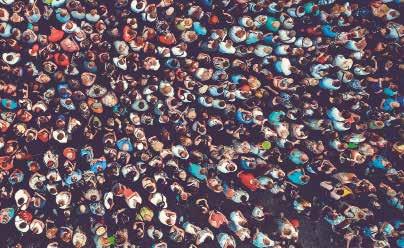
Taking the above into account, the United Nations Human Settlements Program (UN HABITAT) estimates that currently just over half of the world’s population lives in cities and that by 2050 the number could reach up to 70%. This means that, in practical terms, 3 out of every 4 inhabitants of the world will develop in an urban environment.
The former brings with it a series of opportunities for cities as they will consolidate themselves as the great economic and cultural engines, leading us, de facto, to everything will happen here. In the best case of scenarios, you could almost reach the peak of the benefits of
crowded and shared living. However, the current situation in territorial, environmental and social terms impose enormous challenges on the world population to design and implement urban public policies at a global, regional and mainly local or municipal level promptly and forcefully.
In this sense, we will have two great transition periods, 2030 and 2040, where everything seems to indicate that, given the proximity of the first referred period, nothing will be enough to change the structural reality in the cities we live in today.
In this way, the period of greatest opportunity and where the great positive changes for cities will definitely not be able to stop happening is 2040. Today, the forecasts and scenarios are not favorable in the face of global urban problems, so this period it is key for what could be the second half of this century.
69 LAND & BUILDING
Sustentabilidad en el Contexto Legal
 Por J. Eduardo Tapia Zuckermann
Por J. Eduardo Tapia Zuckermann
Nuestro entorno es cada vez más vulnerable en lo que concierne al medio ambiente. La parte de arquitectu ra e ingeniería han abordado técnicas de construcción, métodos más amigables con el planeta y han empujado el uso de materiales con menor impacto y, en la medida de lo posible, reciclables y de mayor conservación. En este contexto de sustentabilidad, ¿qué pasa con la par te normativa y legal?
En primer término, la legislación federal mexicana desde hace treinta y cuatro años regula temas relativos al medio ambiente por medio de la Ley General del Equilibrio Ecoló gico y Protección al Ambiente. A lo largo de estas décadas se han ido adicionando temas más específicos en cuanto a la parte de desarrollo sustentable.
No obstante que la legislación federal se promulgó en épo ca del presidente de la Madrid no se contempló, afortuna damente, que fuese exclusivamente de jurisdicción federal, conforme al artículo 73 de la Constitución Política de los Estados Unidos Mexicanos, sino que los estados y los muni cipios, por la misma materia, pudiesen promulgar ordena mientos complementarios que atendiesen aspectos locales de diversos ecosistemas a lo largo y ancho del país.
Así, un esfuerzo novel en cuanto a sustentabilidad se pro mulgó en junio del año 2021 en Ciudad de México. La Ley de Mitigación y Adaptación al Cambio Climático y Desarro llo Sustentable atiende a temas ambientales que atañen a la ciudad más grande del país.
Sustainability in a Legal Context
Our environment is increasingly vulnerable as far as the environment is concerned. The architecture and engineering part have addressed construction techniques, more friendly methods with the planet and have pushed the use of materials with less impact and, as far as possible, recyclable and with greater conservation. What about the normative and legal part that defines this in a real-world context?
Firstly, Mexican federal legislation for thirty-four years has regulated issues related to the environment through the General Law of Ecological Balance and Environmental Protection. Throughout these decades, more specific topics have been added regarding the part of sustainable development.
Despite the fact that the federal legislation was enacted at the time of the president of Madrid, fortunately, it was not enacted that it be exclusively of federal jurisdiction. In accordance with article 73 of the Political Constitution of the United Mexican States the states and the municipalities, for these matters, could promulgate complementary ordinances that attend to local aspects of diverse ecosystems throughout the country. This is to say environmental law in Mexico is handled at many levels, not just federal.
Thus, a novel effort in terms of sustainability was enacted in June 2021 in Mexico City. The Law on Mitigation and Adaptation to Climate Change and Sustainable Development addresses environmental issues that concern the largest city in the country.
Foto: Stock 70 LAND & BUILDING

71 LAND & BUILDING
Los embates que ha sufrido el entorno ecológico de Ciu dad de México propiciaron que una legislación con mayo res penalidades se aprobara para tratar de paliar, pues lamentablemente no se podrán revertir, los efectos del crecimiento urbano desenfrenado.
El impacto de construcciones que siguen erigiéndose sin una métrica de sustentabilidad objetiva da lugar, invaria blemente, a una falta de sanciones cuando dichas cons trucciones contravengan, por ejemplo, coeficientes utili zables de suelo o de ocupación de suelo, amén de utilizar técnicas de construcción que, literalmente, dejan huella en el entorno.
De esta manera, trayendo el tema a la patria chica, Los Cabos, es preciso que esfuerzos más puntuales y quizás menos ambiciosos se establezcan para que zonas como el estero de San José del Cabo, el corredor turístico o la Sierra de la Laguna, cada una con sus particularidades y amenazas ambientales palpables, pueden consolidarse sin que dicha consolidación sea en detrimento, en grado superior, del medio ambiente en el que están insertos.
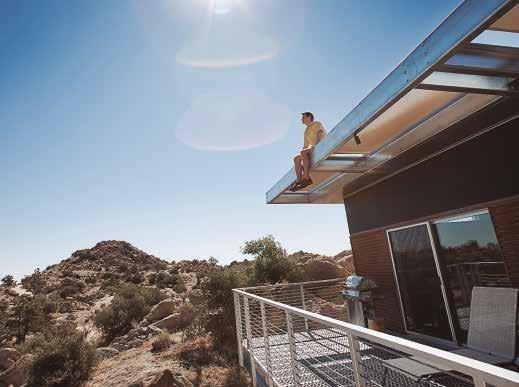
The attacks that the ecological environment of Mexico City has suffered led to the approval of legislation with greater penalties to try to mitigate these, since, unfortunately, the effects of unbridled urban growth cannot be reversed.
The impact of constructions that continue to be erected without an objective sustainability metric invariably results in a lack of sanctions when said constructions contravene, for example, usable coefficients of land or land occupation, in addition to using construction techniques that literally leave a mark on the environment.
In this way, bringing the issue to the small country, Los Cabos, it is necessary that more specific and perhaps less ambitious efforts be established so that areas such as the San José del Cabo estuary, the tourist corridor or the Sierra de la Laguna, each one with its peculiarities and palpable environmental threats, can be consolidated without said consolidation being detrimental, to a greater degree, of the environment in which they are inserted.
LEGAL & FINANZAS 72 LAND & BUILDING




La industria de la construcción en el Municipio debe trans formarse sin que el elemento de coacción estatal, de go bierno, sea el factor determinante para la toma de deci siones por parte de desarrolladores en cuanto a planes de inversión que atañen comercios o viviendas que no estén ajustados a criterios de sustentabilidad; es decir, la parte punitiva de la ley o reglamentación no debe guiar la con ducción de particulares sino que en la medida que deter minado proyecto inmobiliario a desarrollar no esté acorde con técnicas, normatividad, ya sea nacional o internacio nal, debe pausarse el proyecto y replantearse el enfoque antes de someterlo a su autorización.
De esta manera, los proyectos que finalmente reciban la autorización gubernamental, tanto en el ámbito fe deral, estatal como municipal no sufrirán prevenciones o modificaciones que provengan de la autoridad al no estar ajustados a las disposiciones legales vigentes sino más bien mediante la introspección de los inversionis tas que someterán proyectos más amigables con el me dio ambiente, la sustentabilidad y menos ambiciosos en la parte económica. ¿Será posible esto? Me parece que debemos procurarlo.
The construction industry in the Municipality must be transformed without the element of state coercion, of government, being the determining factor for decisionmaking by developers regarding investment plans that concern businesses or homes that are not adjusted to sustainability criteria; that is to say, the punitive part of the law or regulation should not guide the driving of individuals but rather, to the extent that a certain real estate project to be developed is not in accordance with techniques, regulations, whether national or international. In these cases the project should be paused and the proposals made to comply before submitting it for authorization.
In this way, the projects that finally receive government authorization, both at the federal, state and municipal levels, will not suffer preventions or modifications that come from the authority, since they are not adjusted to the current legal provisions, but rather through the introspection of the investors. That will lead to people submitting projects that are more focused around the environment and less focused on the economic aspects. Will this be possible? I think we should try it.
La industria de la construcción en el Municipio debe transformarse sin que el elemento de coacción estatal de gobierno, sea el factor determinante para la toma de decisiones por parte de desarrolladores en cuanto a planes de inversión.
The construction industry in the Municipality must be transformed without the element of state coercion, of government, being the determining factor for decisionmaking by developers regarding investment plans.
LEGAL & FINANZAS
74 LAND & BUILDING
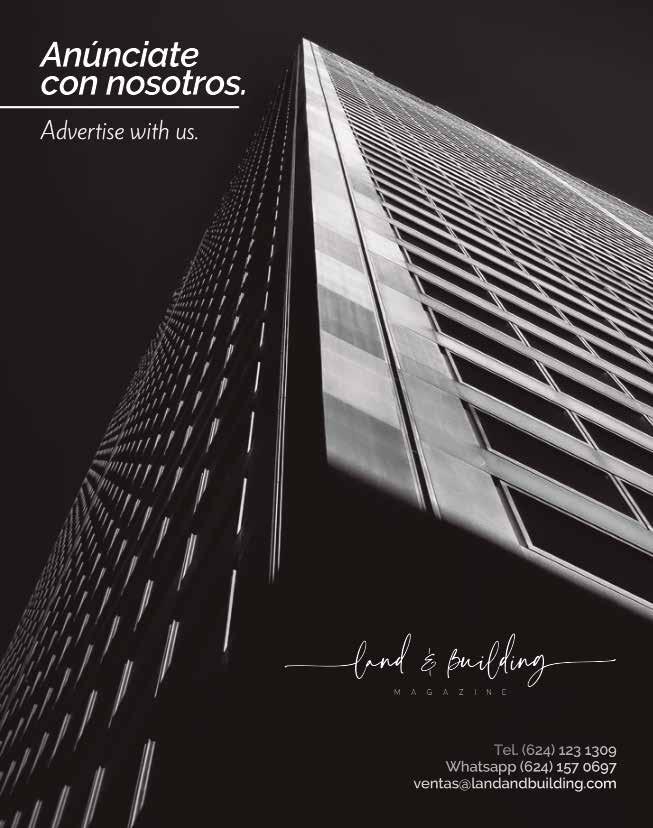
Manifestación de Impacto Ambiental
 Por Héctor Segovia
Por Héctor Segovia
La actividad humana relacionada principalmente con el desarrollo y productividad, ha generado un serio im pacto en el medio ambiente. Por esto, es importante controlar, medir y estudiar cualquier acción que altere el equilibrio ecológico.
En México, la Ley General del Equilibrio Ecológico y la Pro tección al Ambiente (LGEEPA), define en su artículo tercero el impacto ambiental como: la “Modificación del ambiente ocasionada por la acción del hombre o de la naturaleza”
Por ello, derivado de los cambios ambientales, es que en terminos del articulo 28 de la LGEEPA, establece como obligación la presentación de la Manifestación de Impacto Ambiental (MIA) ante la Semarnat, por parte de las perso nas (físicas o morales) responsables de éstas.
Tiene el objetivo de prevenir, mitigar y restaurar los daños al ambiente, así como la regulación de obras o actividades para evitar o reducir sus efectos negativos en el ambiente y en la salud humana.
Mediante un estudio técnico-científico se nos indican los posibles efectos que puede ocasionar una obra o activi dad sobre el medio ambiente, y tiene la finalidad de mi nimizar dichos efectos negativos producidos por la ejecu ción de las obras o actividades. La misión es que nos va a permitir evaluar la factibilidad ambiental para la ejecución
Manifestations of Environmental Impact
Human activity mainly related to development and productivity has generated a serious impact on the environment. For this reason, it is important to control, measure and study any action that alters ecological balance.
In Mexico, the General Law of Ecological Balance and Environmental Protection (LGEEPA), defines in its third article the environmental impact as: “Modification of the environment caused by the action of man or nature”
For this reason, derived from environmental changes, it is that in terms of article 28 of the LGEEPA, it establishes as an obligation the presentation of the Environmental Impact Statement (EIS) before Semarnat, by the people (individuals or legal entities) responsible for are.

Its objective is to prevent, mitigate and restore damage to the environment, as well as the regulation of works or activities to avoid or reduce their negative effects on the environment and on human health.
Through a technical-scientific study, the possible effects that a work or activity may have on the environment are indicated, and its purpose is to minimize said negative effects produced by the execution of the works or activities. The mission is that it will allow us to evaluate the environmental feasibility for the execution of industrial, infrastructure, manufacturing, commercial or service investment projects.
76 LAND & BUILDING




de proyectos de inversión industrial, de infraestructura, manufactura, comercios o servicios.
Cuando se pretenden realizar una obra o actividad, es obligatorio analizar y describir las condiciones ambienta les para evaluar e identificar los impactos potenciales que la construcción y operación de dichas obras.
La SEMARNAT es la autoridad responsable de conocer y ante la que se debe de presentar la Manifestación de Impacto Ambiental para su evaluación y posible autoriza ción. Hecho lo anterior y una vez aprobado por ella, la Procuraduría Federal de Protección al Ambiente (Profepa) debe verificar el cumplimiento de los términos y condicio nantes establecidos.
También puede realizar inspecciones ante denuncias de la ciudadanía presentadas por el daño ambiental causado por obras o actividades específicas, así como proyectos en construcción o en operación que se detectan durante las acciones de inspección sistemática de la Profepa, lo que implica una resposablidad ambiental con multas, así como el inicio de carpetas de investigacion al tratarse un delito ambiental, entre los cuales se consideran: Realizar activi dades con materiales o residuos peligrosos que dañen la salud pública, la flora y fauna silvestre, los recursos natu rales o los ecosistemas.
When you intend to carry out a work or activity, it is mandatory to analyze and describe the environmental conditions to evaluate and identify the potential impacts that the construction and operation of said works.

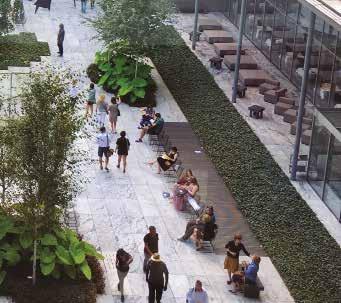
SEMARNAT is the authority responsible for knowing and to which the Environmental Impact Statement must be submitted for its evaluation and possible authorization. Once the above is done and once approved by it, the Federal Office for Environmental Protection (Profepa) must verify compliance with the established terms and conditions.
It can also carry out inspections in the face of citizen complaints filed for environmental damage caused by specific works or activities, as well as projects under construction or in operation that are detected during the systematic inspection actions of Profepa. This implies environmental responsibility with fines as well as the beginning of investigation folders when dealing with an environmental crime. Among these are: Carrying out activities with hazardous materials or waste that damage public health, wild flora and fauna, natural resources or ecosystems.
LEGAL & FINANZAS
79 LAND & BUILDING
GEEKS

80 LAND & BUILDING
Tecnología y desarrollo sustentable
Por César Acostta
La tecnología es un enlace imprescindible entre nosotros los humanos y la naturaleza. Desde el artefacto tecnológico más sencillo (como una pala en las manos de un campesino) has ta la tecnología más sofisticada y compleja (como un satélite observando el estado del medio ambiente desde el espacio).
La tecnología determina cómo aprovechamos la natura leza y al mismo tiempo, desempeña un papel clave en la distribución de los costos y los beneficios derivados de la explotación de los recursos naturales. Esto nos lleva a que cualquier movimiento hacia una sociedad más sustenta ble y justa debería tomar en cuento el uso de la tecnología.
Por lo anterior, cuando hablamos de desarrollo susten table y más concretamente sobre desarrollo inmobiliario sustentable, desde mi punto de vista es indubitable que la aplicación de tecnologías alternativas (solar, eólica, ma teriales de construcción especiales, automatización, etc.) no es solo una moda, si no una necesidad imperante y ne cesaria para reducir los efectos negativos que tienen los proyectos en nuestro entorno.
Cuando hablamos de edificios inteligentes, podemos pen sar en un tipo de edificio que utiliza la tecnología para ga rantizar el funcionamiento óptimo del mismo teniendo en cuenta aspectos como la conectividad, la seguridad, el uso eficiente de los recursos a través de la sostenibilidad apli cada a los edificios o el confort de los usuarios.
Soluciones tecnológicas en la construcción y funciona miento de edificios y hogares sostenibles
La aplicación de las tecnologías como Internet de las co sas (IoT), BIM y Construcción Industrializada, permite la edificación de viviendas de consumo de energía casi nulo.
Technology and sustainable development
Technology is an essential link between us humans and nature. From the simplest technological artifact (such as a shovel in the hands of a farmer) to the most sophisticated and complex technology (such as a satellite observing the state of the environment from space).
Technology determines how we take advantage of nature and at the same time, it plays a key role in the distribution of the costs and benefits derived from the exploitation of natural resources. This leads us to the fact that any movement towards a more sustainable and just society should consider how technology can be used.
Therefore, when we talk about sustainable development and more specifically about sustainable real estate development, from my point of view it is unquestionable that the application of alternative technologies (solar, wind, special construction materials, automation, etc.) is not just a fad. If not this, then a prevailing and urgent need to reduce the negative effects that projects have on our environment.
When we talk about smart buildings, we can think of a type of building that uses technology to guarantee its optimal operation, considering aspects such as connectivity, security, the efficient use of resources through sustainability applied to buildings. or user comfort.
Technological solutions in the construction and operation of sustainable buildings and homes.

GEEKS 81 LAND & BUILDING
Es lo que se conoce como Net Zero Energy Buildings (Nzeb). Edificios con una reducida demanda energética que aprovechan las energías renovables para compen sar el escaso consumo energético para su normal funcio namiento. La reducida demanda energética se consigue mediante la aplicación de estrategias pasivas en el di seño de la envolvente térmica del edificio: alto nivel de aislamiento, protección solar, hermeticidad, reducción de puentes térmicos, etc.
Fachadas dinámicas
Pero dichas estrategias también pueden ser activas. Ejemplo de ellos son las fachadas dinámicas que integran sistemas de protección solar de alta tecnología para re ducir el consumo energético asociado a la refrigeración. Se trata de fachadas adaptativas que interactúan con el entorno en función de las condiciones climáticas cambian tes modificando su geometría a través de mecanismos programados y por lo tanto automatizados. Otro ejemplo más sencillo es el de vidrios de ventanas que se hacen más o menos opacos, gestionada incluso a través de una apli cación móvil por el propio usuario.
Aprovechamiento de las energías renovables
En cuanto a la generación de energía mediante el aprove chamiento de las energías renovables podemos encontrar soluciones que se integran perfectamente en la arquitec tura como son los vidrios o los tejados solares. Sistemas que provechan la radiación solar para producir energía eléctrica limpia, que pueden incluir también el almace namiento energético. La geotermia o la eólica también tienen cabida en mayor o menor grado.Dispositivos inteli gentes que ayudan a reducir el consumo energético
Para reducir el consumo de recursos en el hogar hoy en día el mercado nos ofrece pequeños dispositivos que nos ayudan a ahorrar. Pequeños aparatos que informan de la temperatura en el interior de nuestra vivienda y que se pueden controlar a través del teléfono móvil, compatibles con sistemas de calefacción y climatización incluso en el hogar, o que sirven para gestionar el consumo de agua de forma responsable en el hogar.
Sin temor a equivocarme, la aplicación de las tecnologías sustentables desde los procesos de construcción u opera ción de las edificios o viviendas, nos dan la oportunidad de dejar un mejor mundo a las siguientes generaciones.
The application of technologies such as the Internet of Things (IoT), BIM and Industrialized Construction, allows the construction of houses with almost zero energy consumption. It is what is known as Net Zero Energy Buildings (Nzeb). Buildings with a reduced energy demand that take advantage of renewable energies to compensate for the low energy consumption for their normal operation. The reduced energy demand is achieved through the application of passive strategies in the design of the thermal envelope of the building: high level of insulation, solar protection, hermeticity, reduction of thermal bridges, etc.
Dynamic facades
These strategies can also be active. An example of these are the dynamic facades that integrate high-tech solar protection systems to reduce energy consumption associated with cooling. These are adaptive facades that interact with the environment based on changing climatic conditions, modifying their geometry through programmed and therefore automated mechanisms. Another simpler example is that of window glass that becomes more or less opaque, managed even through a mobile application by the user.
Harnessing renewable energy
Regarding power generation by harnessing renewable energy, we can find solutions that are perfectly integrated into architecture, such as glass or solar roofs. Systems that take advantage of solar radiation to produce clean electrical energy, which may also include energy storage. Geothermal or wind power also have a place to a greater or lesser degree depending on the location.
Smart devices that help reduce energy consumption
To reduce the consumption of resources in the home today, the market offers us small devices that help us save. Small devices that report the temperature inside our home and that can be controlled via mobile phone, compatible with heating and air conditioning systems even in the home, or that serve to manage water consumption responsibly in the home.
Without a doubt, the application of sustainable technologies from the construction or operation processes of buildings or homes, give us the opportunity to leave a better world to the following generations.
GEEKS 82 LAND & BUILDING
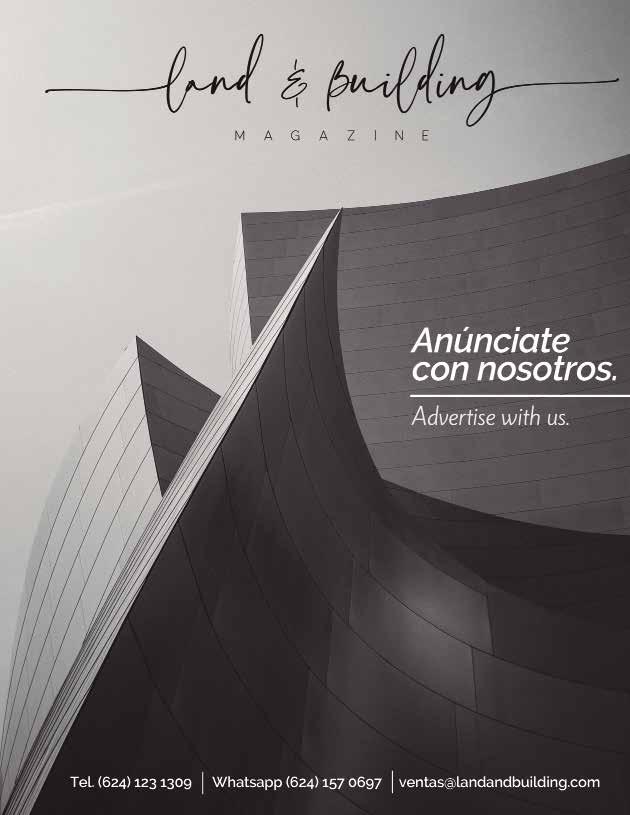
Metaverso
 Por Gustavo González
Por Gustavo González
El metaverso es la nueva forma de realidad virtual, donde se busca tener una réplica del mundo real, desarrollando actividades de distintas formas. Con esto, las personas podrán interactuar con avatares personalizados en dife rentes espacios de forma virtual. Podrán comprar objetos, visitar museos, salas de arte y asistir a conciertos.
Empresas como Microsoft, Google y Facebook están apos tando por este nuevo formato y se pretende que duran te los próximos 5-10 años crecerá de forma significativa, siendo la nueva realidad de muchos usuarios.
Incluso a finales de 2021, Mark Zuckerberg propietario de Facebook, Instagram y Whatsapp, anunció que la empre sa pasaba a llamarse Meta, buscando posicionarse en esta nueva apuesta de plataforma (realidad virtual, realidad au mentada). Esto implicará para la compañía gran parte de su inversión y contratación de personal para el desarrollo.
“Horizon Workrooms” de Facebook, es una plataforma de realidad virtual para teletrabajo, donde los usuarios se unen como avatares en una sala de conferencia y permite utilizar características de una oficina física, escritorios vir tuales, documentos digitales y la capacidad de interacción laboral. “Horizon Home” está enfocado en la creación de nuestro propio hogar virtual, donde se podrá disfrutar del tiempo con amigos, eventos, jugar y platicar, creando una nueva experiencia de interacción.
“Metaverso” es vivir y sentir, no únicamente mediante el uso de lentes 3D, sino también a través de pulseras y sen sores que se conecten a tu brazo y puedan leer los pulsos eléctricos para que tu avatar lo replique.
NVIDIA, empresa reconocida por la creación de tarjetas graficas para los videojuegos, también está trabajando en el desarrollo de un “Omniverse”, buscando que el usuario haga pruebas de distintos dispositivos antes de cons truirlos en la vida real. Un ejemplo de esto es la alianza realizada con BMW para replicar su fábrica de Alemania (Regensburg), utilizando elementos como trabajadores, robots, piezas de ensamblaje, construcción, que serán si muladas por medio de la inteligencia artificial.
Videojuegos multijugador como Fortnite (Epic Games), donde la experiencia e interacción revolucionó el modo de jugar y empresas como Roblox (plataforma de videojue gos) que permite a los usuarios crear sus propios mundos virtuales, forman parte del inicio del “metaverso”.
Parte importante de esta tendencia será poder “moneti zar”, por lo que parte de la economía y desarrollo global podrá verse influenciado por este negocio. El mundo cam bia constantemente y adaptarse a las nuevas tecnologías es el primer paso para nuestro crecimiento.

84 LAND & BUILDING
Metaverse
Metaverse is a new form of virtual reality, that seeks to create a replica of the real world, developing activities in different ways. With this, people will be able to interact with personalized avatars in different spaces virtually. They will be able to buy objects, visit museums, art galleries and attend concerts.
Companies like Microsoft, Google and Facebook are betting on this new format, and it is expected that over the next 5-10 years it will grow significantly, being a new reality for many users.
Even at the end of 2021, Mark Zuckerberg, owner of Facebook, Instagram and WhatsApp, announced that the company would be renamed Meta, seeking to position itself in this new platform endeavor (virtual reality, augmented reality). This will imply for the company a large part of its investment and hiring of personnel for development.
Facebook’s “Horizon Workrooms” is a virtual reality platform for telecommuting, where users come together as avatars in a conference room and enables features of a physical office, virtual desktops, digital documents, and work interaction capabilities. “Horizon Home” is focused on creating our own virtual home, where you can enjoy time with friends, events, play and talk, creating a new interaction experience.
“Metaverse” is living and feeling, not only through the use of 3D glasses, but also through bracelets and sensors that connect to your arm and can read the electrical pulses so that your avatar can replicate it.
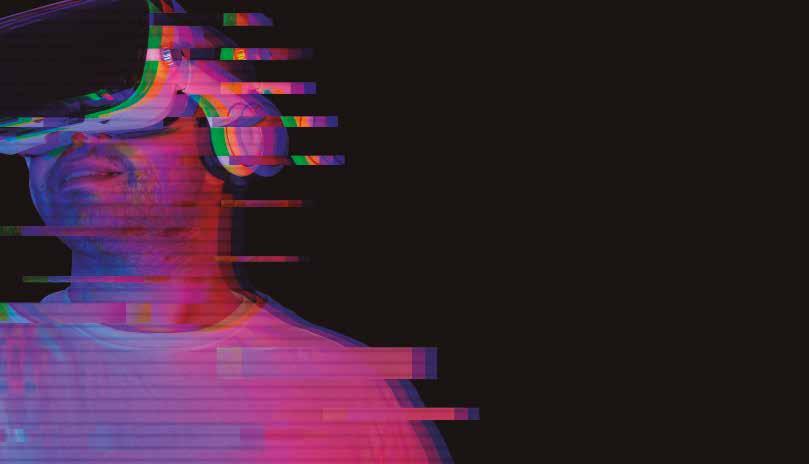
NVIDIA, a company recognized for the creation of graphics cards for video games, is also working on the development of an “Omniverse”, looking for the user to test different devices before building them in real life. An example of this is the alliance made with BMW to replicate its factory in Germany (Regensburg), using elements such as workers, robots, assembly parts, construction, which will be simulated through artificial intelligence.
Multiplayer video games like Fortnite (Epic Games), where the experience and interaction revolutionized the way of playing, and companies like Roblox (video game platform) that allows users to create their own virtual worlds, are part of the beginning of the “metaverse”.
An important part of this trend will be to be able to “monetize”, so part of the global economy and development may be influenced by this business. The world is constantly changing and adapting to new technologies is the first step for our growth.
85 LAND & BUILDING
Un lugar sustentable y especial

 Por Francisco Vargas
Por Francisco Vargas
Los Cabos es el concepto internacionalmente conocido de este majestuoso escénico lugar de México ubicado al extremo sur de la Pe nínsula de Baja California Sur; sin embargo, el concepto escasamente describe la escénica del lugar que a miles de nosotros ha conquistado y obligado a escogerlo no únicamente como un destino de vacaciones, si no como un modo de vida que enriquece nuestra existencia y nos obliga a cuidar y compartir.
Los Cabos es visitado principalmente como uno de los mejores lugares para venir de pesca de portiva, para venir a jugar golf en cualesquiera de los increíbles campos que ofrecen una expe riencia inigualable dada la exótica combinación desértica con el mar y por ultimo la vida noctur na que ofrece el destino y sus cientos de res taurantes, sin embargo, lo que no esta al des cubierto a simple vista es exactamente lo que describe a La Baja.
Comenzando con inigualables paisajes y acer camientos a la flora y la fauna desértica al re correr decenas de Mountain bike trails en To dos Santos, La Paz, Cabo San Lucas, San José del Cabo y La Ventana entre los que destacan y que han sido preparados para todos los niveles ciclistas, desde quienes únicamente disfrutan un paseo en doubles y hacer un poco de ejer
A sustainable and special place
Los Cabos is the realization of this concept. This majestic scenic place in Mexico located at the southern end of the Baja California Sur Peninsula; however, the words themselves barely describe the scenery of the place that thousands of us have conquered and forced to choose not only as a vacation destination, but also as a way of life that enriches our existence and forces us to care for and share.
Los Cabos is known as one of the best places to come for sport fishing, to come to play golf in any of the incredible courses that offer an unparalleled experience given the exotic combination of the desert with the sea and finally the nightlife offered by the destination and its hundreds of restaurants. However, what is not revealed to the naked eye is exactly what describes La Baja.
Starting with unparalleled landscapes and approaches to desert flora and fauna by touring dozens of Mountain bike trails in Todos Santos, La Paz, Cabo San Lucas, San José del Cabo and La Ventana, among which stand out and have been prepared for all cycling levels, from those who only enjoy a ride in doubles and do a little exercise, to the craziest and most extreme single tracks with ramps and descents that accompany the way of life in Baja California Sur.
86 LAND & BUILDING
BA JA CONOCE

87 LAND & BUILDING
cicio, hasta los más locos y extremos single tracks con rampas y bajadas que acompañan al modo de vida en Baja California Sur.
Seguido por las hermosas y místicas playas que tienen rodeada a esta histórica península, acompañan una con tinua búsqueda de experiencias, ya que por la posición exacta en la que se sitúa Baja California Sur, la playa que en cierta temporada del año puede ser literal una lagu na para nadar, hacer paddle boarding, foiling y kayak , en otra se convierte en un escenario impresionante de deportes extremos como el, kitesurfing y windsurfing, en el que por ser perseguido a nivel mundial por miles y miles de quienes disfrutamos del contacto con los ele mentos agua y aire, se convierte en uno de los destinos favoritos de muchos.
Crecientes son los dichosos que tienen la oportunidad de poder vivir de todas las temporadas del año al explorar nuestro destino, que si bien el verano tiene a ser muy ca luroso, premia con la mejor temporada de marejadas pro venientes del sur que activan playas tanto de dominio po pular, como las que aun se reservan escondidas y muchas otras aun secretas del público para vivir en su máximo apogeo del surf y la vida de playa.
Aunque la atmósfera mística e inexplorada aflora una experiencia en sincronía con la naturaleza, la sustenta bilidad en general en nuestro hermoso destino aun no sincroniza con el valor patrimonial que ofrece, ya que la oportunidad en el manejo de la basura es latente, el control y uso de agua de desecho avecina un colapso y la fuente principal de energía que alimenta a nuestro
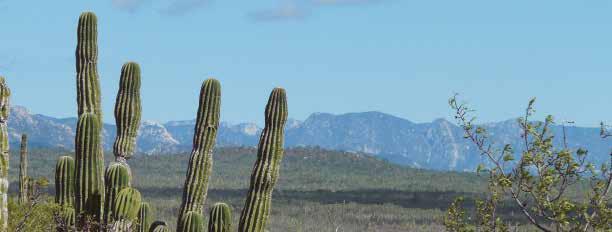
Followed by the beautiful and mystical beaches that surround this historic peninsula, they accompany a continuous search for experiences. Due to the exact position in which Baja California Sur is located, the beach that in a certain season of the year can literally be a lagoon to swim, paddle boarding, foiling and kayaking, in another it becomes an impressive setting for extreme sports such as kitesurfing and windsurfing, in which thousands and thousands of those who enjoy contact with the elements are pursued worldwide. water and air, it becomes one of the favorite destinations of many.
Growing are the number of lucky ones who have the opportunity to be able to live from all seasons of the year when exploring our destination, which although summer tends to be very hot, rewards with the best season of swells coming from the south that activate beaches both popular domain , like those that are still hidden and many others still secret from the public to live at its peak of surfing and beach life.
Although the mystical and unexplored atmosphere brings out an experience in sync with nature, sustainability in general in our beautiful destination is still not in sync with the heritage value it offers, since the opportunity in waste management is latent, the control and use of wastewater is approaching a collapse and the main source of energy that feeds our beautiful paradise still depends on the burning of diesel and fuel oil; the most polluting sources of energy to meet the uncontrollable growing demand for electricity, even trying to solve it by burning other less polluting gases.
CONOCE BAJA 88 LAND & BUILDING
hermoso paraíso depende aún de la quema de diesel y combustóleo; las fuentes más contaminantes de ener gía para satisfacer la incontrolable creciente demanda de electricidad, aun tratando de resolverlo mediante la quema de otros gases menos contaminantes.
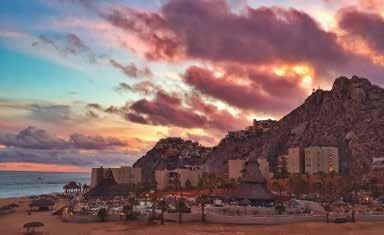
Dentro de la misión y la experiencia de nuestro estado, destaca un santuario del majestuoso coloso, la ballena gris, que recorre 9,000 kilómetros desde Alaska para lle gar a dar a luz a crías en nuestras costas. La inigualable experiencia de visitar este majestuoso animal de más de 30 toneladas de peso y 16 metros de largo, tiene lugar en la Bahía de San Ignacio y la Bahía de San Carlos a casi dos horas y media de la capital sudcaliforniana. Se debe con tactar a los pescadores locales para programar un tour respetuoso a esta bahía, en el que tras minutos de total calma y paciencia, curiosas y sigilosas se acercan las ba llenas que triplican el tamaño de la diminuta embarcación dejando a uno interactuar con ellas, presenciar con todos los sentidos de sus exhalaciones, y si han tenido suerte posiblemente hasta hacer contacto breve con ellas y to carlas con las manos. Si bien esta es solo una de las místi cas vivencias de Baja California Sur, es imprescindible una preocupante fumarola amarilla que inunda este hermoso santuario con la quema del combustible que energiza el destino, dejando en evidencia la gran oportunidad que te nemos para mejorar y tomar acción para lograr un paraíso sustentable y aprovechar los casi 350 días de sol sin nu bes, pudiendo aprovechar esta fuente renovable de ener gía en nuestro paraíso.
Within the mission and experience of our state, there is a sanctuary for the majestic colossus, the gray whale, which travels 9,000 kilometers from Alaska to give birth to calves on our shores. The unique experience of visiting this majestic animal weighing more than 30 tons and 16 meters long, takes place in San Ignacio Bay and San Carlos Bay, almost two and a half hours from the South Californian capital. Local fishermen should be contacted to schedule a respectful tour to this bay, in which after minutes of total calm and patience, curious and stealthy, the whales triple the size of the tiny boat, allowing one to interact with them, witness with all the senses of their exhalations, and if they have been lucky possibly even making brief contact with them and touching them with their hands. Although this is just one of the mystical experiences of Baja California Sur, a worrying yellow fumarole that floods this beautiful sanctuary with the burning of the fuel that energizes the destination is essential, revealing the great opportunity we must improve and take action to achieve a sustainable paradise and take advantage of the almost 350 days of sun without clouds, being able to take advantage of this renewable source of energy in our paradise.
CONOCE BAJA 89 LAND & BUILDING
Migriño una
mirada al Pacífico
Por Ricardo Reyes
Al oeste del municipio de Los Cabos y a escasos 20 minu tos del centro de Cabo san Lucas, se encuentra una zona privilegiada por Dios y la naturaleza. Tomar la carretera que lleva a La Paz en el amanecer o al caer el sol es un espectáculo que estoy seguro nunca olvidarás, montañas suavizadas con un pincel perfecto que dibujan siluetas sin exagerar formas, colores contrastantes en el cielo que re tan a cualquier artista a divagar tonos y matices que no existían en tu mente, el mar del océano Pacífico llegando en cada ola de manera contundente e incesante a sus pla yas perfectas de arena dorada.
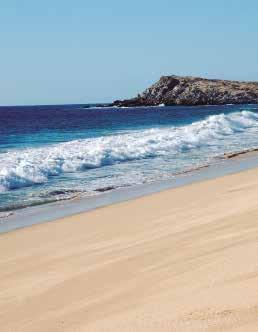
Esto es Migriño, una mirada al océano Pacífico de los Ca bos, un lugar donde las ballenas pasean confiadas ante sus playas, donde los arroyos convergen y descargan su
bondad en el mar abierto. Caminar por su playa y ver a los pescadores de orilla en un acordado trato en silencio con las olas para respetarse mutuamente, las ballenas pa seando con sus ballenatos a escasos metros de la orilla y ese olor húmedo a arena y rocas de mar es inconfundible.
Su gente de origen local es gente honesta, trabajadora, generosos de corazón, siempre encuentras un café dispo nible, la mejor comida en una hospitalidad como en pocos lugares del mundo se puede entender. Lugares como es tos hacen de Baja California Sur un lugar único y auténtico, una mezcla mística de seres humanos, perfecta sintonía con el mar y un respeto absoluto con la sierra. Esto es el Pacífico mexicano, de Baja California Sur, de Los Cabos. Bienvenidos al Pacífico de nuestra sangre, Migriño.

90 LAND & BUILDING
Migriño, a look at the Pacific
To the west of the municipality of Los Cabos and just 20 minutes from downtown Cabo San Lucas, there is an area given special privileged by God and nature. Taking the road that leads to La Paz at dawn or at sunset is a sight that I am sure you will never forget, mountains softened with a perfect brush that draw silhouettes without exaggerating shapes, contrasting colors in the sky that challenge any artist to wander tones and nuances that did not exist in your mind, the sea of the Pacific Ocean arriving in each wave in a forceful and incessant way to its perfect beaches of golden sand.
This is Migriño, a slice of the Pacific Ocean coast of Los Cabos, a place where whales walk confidently in front of
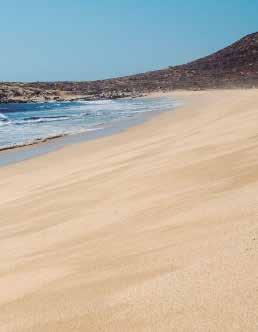
its beaches, where streams converge and discharge their goodness into the open sea. Walking along its beach and seeing the shore fishermen in an agreed deal in silence with the waves to respect each other, the whales walking with their calves a few meters from the shore and that humid smell of sand and sea rocks is unmistakable.
Its people of local origin are honest, hard-working people, generous at heart, you will always find a coffee available, the best food in a hospitality, one of the few places the world is simple to understand. Places like these make Baja California Sur a unique and authentic place, a mystical mixture of human beings, perfectly in tune with the sea and absolute respect for the mountains. This is the Mexican Pacific, of Baja California Sur, of Los Cabos. Welcome to the Pacific of our blood, Migriño.
CONOCE BAJA 91 LAND & BUILDING
Chefs x Los Cabos al rescate de Santiago
Por César Acostta
Después de la pausa obligada por la pandemia, regresó con gran éxito el festival Chefs x Los Cabos para recaudar fon dos en favor de los damnificados por el incendio en la delega ción de Santiago. En un despliegue extraordinario de parte de los chefs más importantes de Los Cabos, proveedores de alimentos, agencias de marketing y medios de comunicación, se lograron recaudar $200,000 pesos, mismos que serán uti lizados para la reconstrucción de viviendas de los afectados.
El chef Edgar Román, fundador del festival, nos comparte que Chefs por Los Cabos es una agrupación en la cual se encuen tran los más prestigiados Chefs del destino, quienes se unen para realizar eventos gastronómicos para reunir fondos para apoyar causas altruistas, donan lo recaudado en su evento
After the pause forced by the pandemic, the Chefs x Los Cabos festival returned with great success to raise funds for those affected by the fire in the Santiago delegation. In an extraordinary display by the most important chefs in Los Cabos, food suppliers, marketing agencies and media, $200,000 pesos were raised, which will be used to rebuild the homes of those affected.
Chef Edgar Román, founder of the festival, shares with us that Chefs for Los Cabos is a group that includes the most prestigious Chefs of the destination, who come together to hold gastronomic events to raise funds to support altruistic
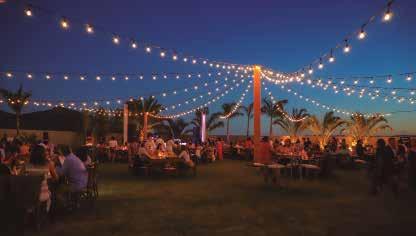

 Chefs x Los Cabos to Santiago’s rescue
Chefs x Los Cabos to Santiago’s rescue
92 LAND & BUILDING
anual a comunidades y grupos sociales que se encuentran en situación vulnerable para que se puedan llevar a cabo acciones en beneficio de las personas que más lo necesitan y de esta forma cambiar vidas en la comunidad, por medio de lo que mejor saben hacer “Cocinar del Fogón al Corazón”.

Así mismo, este tipo de iniciativas cuentan con el apoyo de Club Vatel, que es una asociación a nivel internacional, con sede en la ciudad de México, que agremia a los Cocineros Profesionales (Chefs) más importantes de cada país en donde existe (BCS cuenta con su propio capítulo), auspicia dos por la academia culinaria francesa, quien avala y res palda las actividades que se hacen a nombre del Club Vatel.
Finalmente, aportando transparencia a la aplicación de los recursos, debemos destacar que la participación del Club Rotario Cabo San Lucas Del Mar, el cual está conformado por un grupo de amigos rotarios con fines comunes y que realizan esfuerzos durante el año para apoyar a la comu nidad de Los Cabos que más lo necesita.
causes, donate the proceeds in its annual event to communities and social groups that are in a vulnerable situation so that actions can be carried out for the benefit of the people who need it most and in this way change lives in the community, through what they know how to do best “ Cooking from the Stove to the Heart”.
Likewise, this type of initiative has the support of Club Vatel, which is an international association, based in Mexico City, that brings together the most important Professional Cooks (Chefs) of each country where it exists (BCS has its own chapter), sponsored by the French culinary academy, which endorses and supports the activities carried out on behalf of Club Vatel.
Finally, providing transparency to the application of resources, we must highlight the participation of the Cabo San Lucas Del Mar Rotary Club, which is made up of a group of Rotarian friends with common goals and who make efforts during the year to support the community of Los Cabos that needs it most.
SOCIALES
Guadalajara
Ubicado en la colonia Americana en Guadalajara una de las zonas con mayor plusvalía en la ciudad. Desarrollo pensado para la persona que disfruta vivir en la ciudad y estar conectada con todo. De partamentos de 1 y 2 recamaras, área comercial en planta baja y varias amenidades como Co Wor king, terraza en el ultimo piso con vista panorámi ca a la ciudad, asadores y gimnasio. Ideales para rentar en Airbnb, con rendimientos anuales de un 12% bajo esta modalidad.
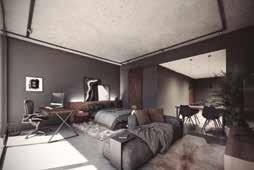
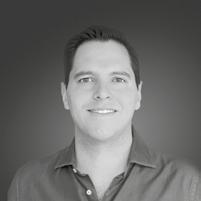
Located in the Americana neighborhood in Guadalajara, one of the areas with the highest surplus value in the city. These developments are designed for the person who enjoys living in the city and being connected to everything. Apartments with 1 and 2 bedrooms, a commercial area on the ground floor and several amenities such as a coworking space, a terrace on the top floor with a panoramic view of the city, grills and a gym. Ideal for renting on Airbnb, with annual returns of 12% under this modality.
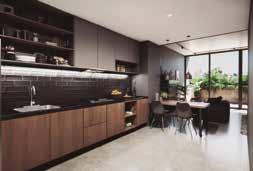
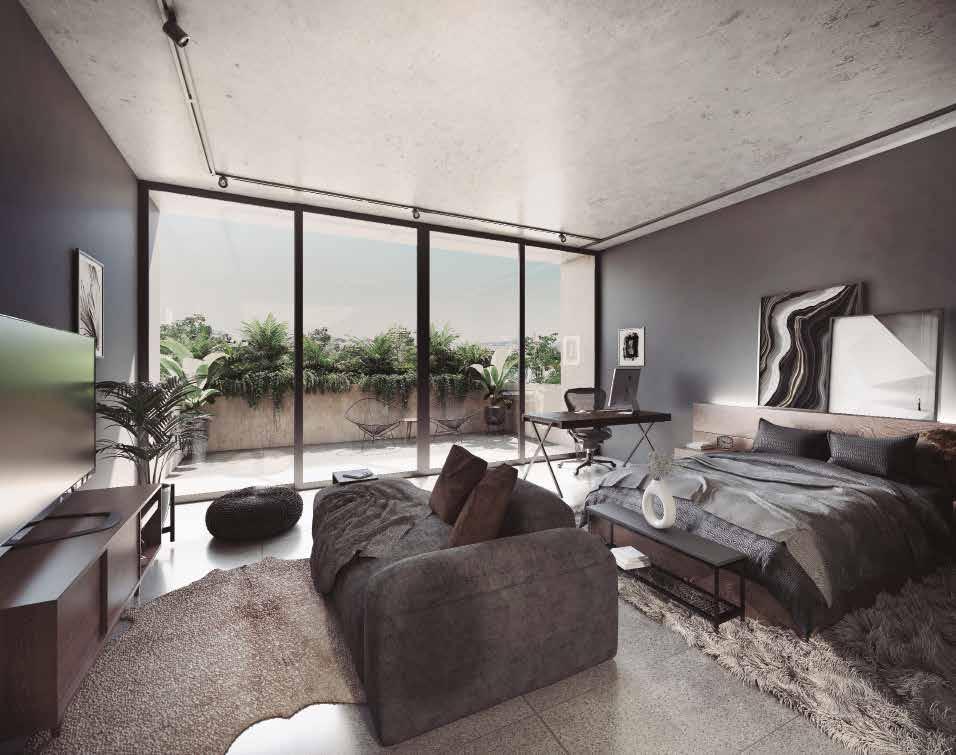
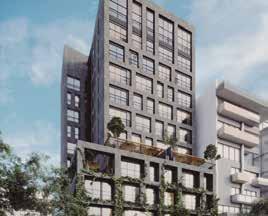
Desde $2,600,000 MXN hasta $4,500,000 MXN
Socio de Real Estate Land & Building +52 55 1451 1280 gustavo@landandbuilding.com
Gustavo González
95 LAND & BUILDING
ATENA URBAN LIVING DEPARTAMENTOS
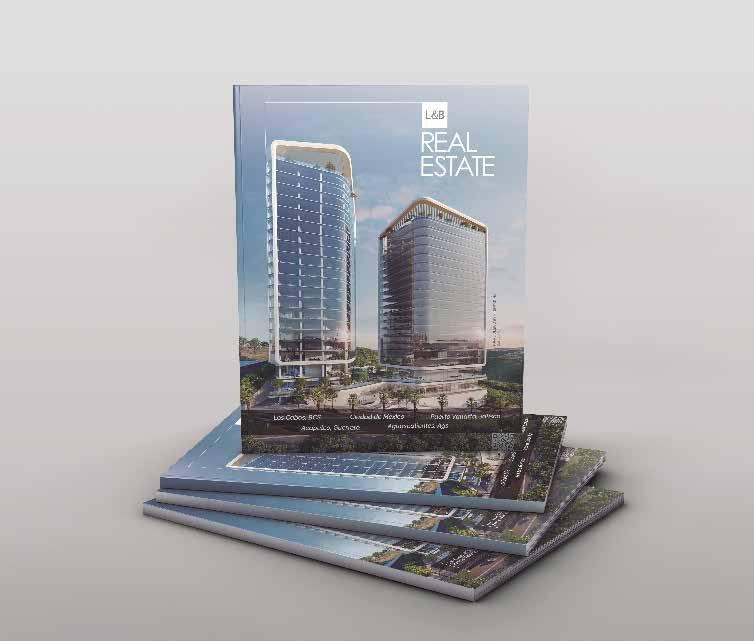
Anúnciateconnosotros, nueva sección Land and Building Real Estate Tel +52 55 1474 3212 | ventas@landandbuilding.com L&B 94 LAND & BUILDING
CASA MORELOS
Cuautla - Morelos
Incomparable Residencia de ensueño, con un terreno de 41, 889m2 y 3900 m2 de construcción. La propiedad cuenta con 10 recamaras, 10 baños completos, 3 medios baños, 10 lugares de estacionamiento, sala, cocina, comedor, cancha de tenis, alberca con vestidores, jacuzzi, pozos de agua, celdas solares, planta de luz, manantiales, persianas eléctricas en toda la casa, fuentes, esculturas, lago artificial, biblioteca con estudio, salón de juegos y circuito cerrado de vigilancia. Gran extensión de áreas verdes.
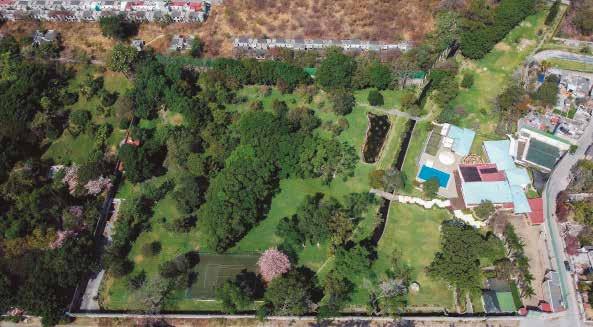

An incomparable dream residence, encompassing 41,889 m2 and 3,900 m2 of construction. The property has 10 bedrooms, 10 full bathrooms, 3 half bathrooms, 10 parking spaces, a living room, kitchen, dining room, tennis court, swimming pool with dressing rooms, Jacuzzi, water wells, solar cells, power plant, springs, blinds. electricity throughout the house, fountains, sculptures, artificial lake, library with study, games room and closed-circuit surveillance. Large expanse of green areas. Precio $ 10, 000, 000 USD
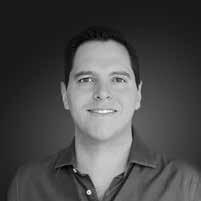
Gustavo González
Socio de Real Estate Land & Building +52 55 1451 1280 gustavo@landandbuilding.com
97 LAND & BUILDING Cuautla
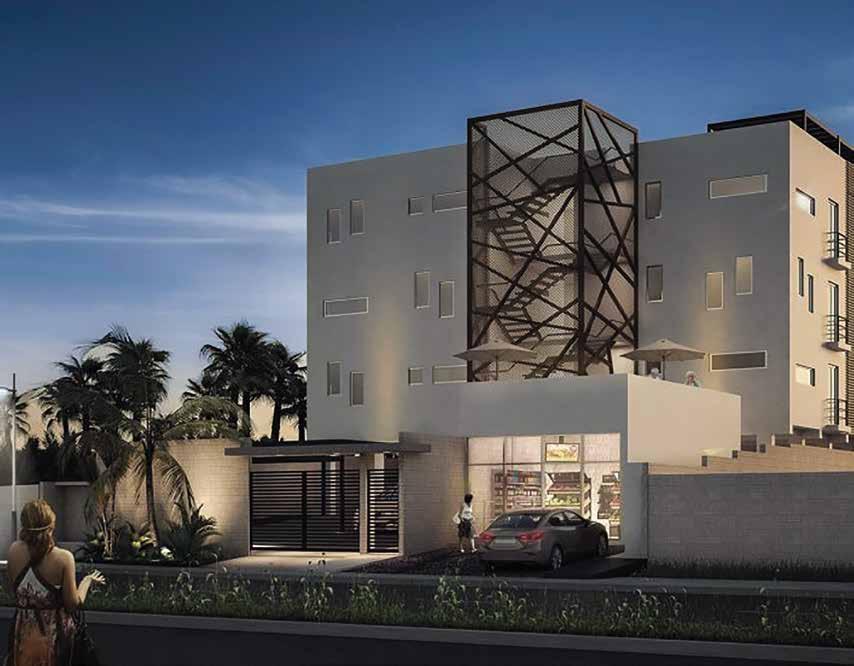
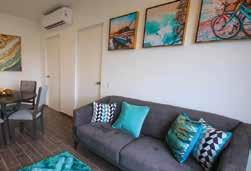
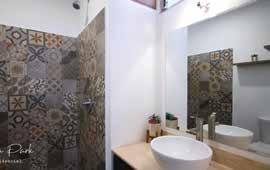
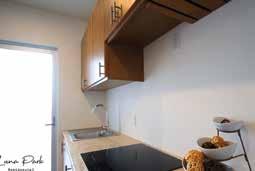

88 LAND & BUILDING | Diciembre 2021 Iván Monroy Broker IM Bienes Raíces +52 624 160 2118 ivanmonroy@imbienesraices.com MODERNOS DEPARTAMENTOS Desde $1,195,000 MXN MLS 20-481 2 Recámaras amplias, todas con iluminación LED. 500 m2 de rooftop, con 3 asadores y juegos infantiles. Muebles de baño Helvex y pisos Interceramic. Estacionamiento techado y pisos de concreto. 2 spacious bedrooms, all with LED lighting.
sq ft of rooftop, with
barbecue
Helvex bathroom furniture and
parking and concrete
Los Cabos 96 LAND & BUILDING
5381.96
3
grills and children’s playground.
Interceramic floors. Covered
floors. www.lunaparkloscabos.com
Los Cabos

LOTES RESIDENCIALES PREVENTA

Ubicado a 10 minutos del centro de San José, zona en crecimien to hacia Cabo del Este muy cerca de Vidanta. Rancho La Lagu na cuenta con 95 hectareas, dividida en 6 fases. Fases 1 y 2 ya disponibles con lotes promedio de 1,200 m2. Lotes rústicos ecofriendly. Precio por m2 inicia en 25 USD a 30 USD m2, se ofrece fi nancimiento por el desarrollador. Se cuenta con un predio adicio nal de 300 hectáreas disponibles en la zona para desarrolladores.
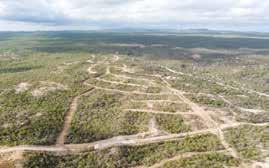


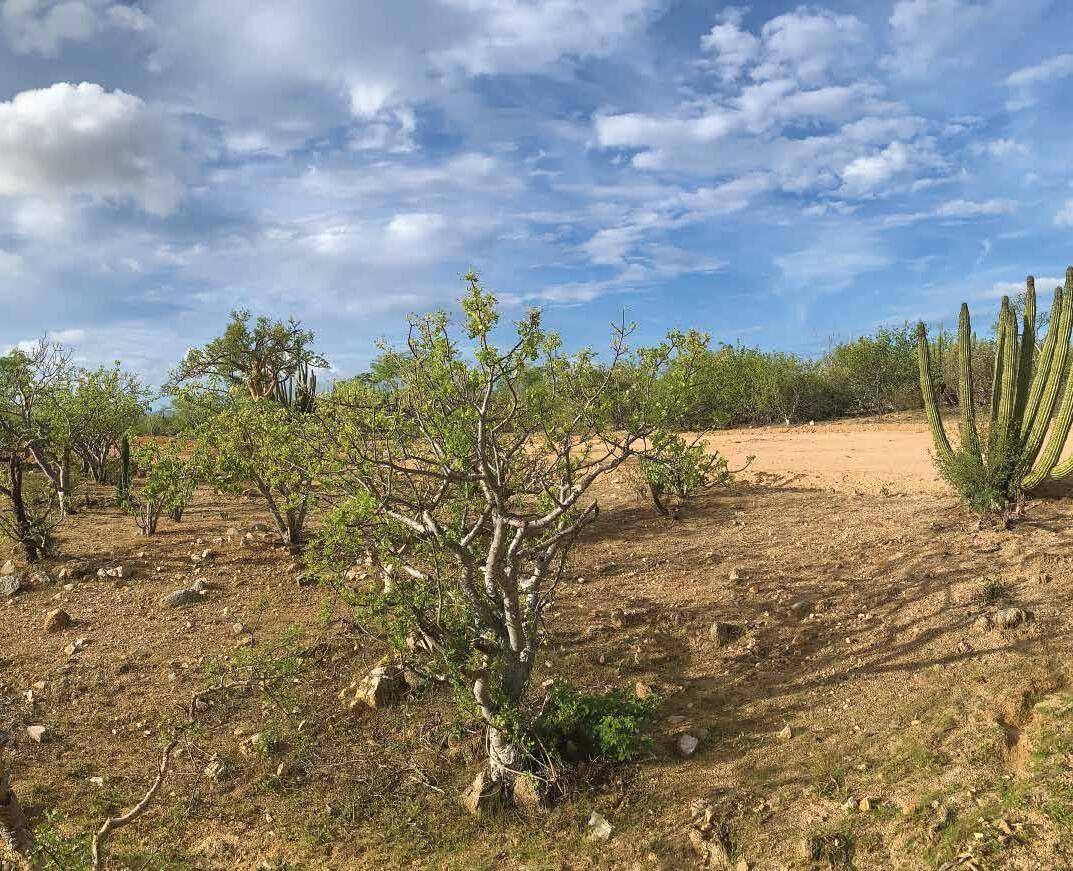
Located in an area under fast development (growing towards Cabo del Este) 10 minutes away from San Jose downtown very close to Vidanta. La Laguna Ranch has a total surface of 95 hectares divided into 6 phases. Phases 1 and 2 are currently available, rustic eco-friendly land plots with an average of 12,916.69 sq ft. Prices starting at $2.33 USD to $2.80 USD/ 1 sq. ft, financing plans are offered by the developer. An adjacent 300 hectares of land is available for developers.
Socio de Real Estate Land & Building +52 55 1451 1280 gustavo@landandbuilding.com
Desde $25 USD m2
99 LAND & BUILDING
Gustavo González
TORRE DESIGNO BY PININFARINA
TORRE DESIGNO es el primer espacio de oficinas en Bosque Real, diseñado por la firma italina Pininfarina. Esta ubicado en una de las zonas con mayor plusvalía en el Poniente de la CDMX. Dos torres de oficinas con superficies desde los 27 m2 y plantas tipo de 1270 m2, precio de preventa en 4,500 USD / m2. Elegancia e innovación hacen un diseño único que revoluciona el concepto de oficinas y estilo de vida. Con la reciente apertura del campus de la Univesidad Panamericana,el desarrollo de nuevos comercios, el club de golf y las nuevas vías de acceso, se ha detonado como una de las mejores zonas para vivir. Vistas panorámicas de Bosque Real e Interlomas, certificación LEED. Oportunidad de inversión, se cuenta con planes de financiamien to interesantes para los inversionistas.
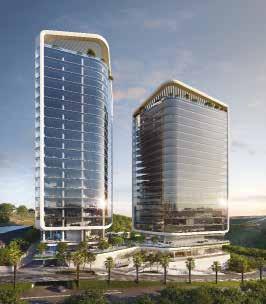
TORRE DESIGNO is the first office space in Bosque Real, designed by the Italian firm Pininfarina. It is located in one of the areas with the highest added value in the West of Mexico City. Two office towers with surfaces starting at 290.62 sq ft and standard floors of 13,670.16 sq ft, pre-sale price of $420.56 USD / 1 sq ft. Elegance and innovation make a unique design that revolutionizes the concept of offices and lifestyle. With the recent opening of the campus of the prestigious Panamerican University, the development of new shops, the golf club, and the new access roads, it has been detonated as one of the best areas to live. Panoramic views of Bosque Real and Interlomas and LEED certification. Great investment opportunity, interesting financing plans available for investors.
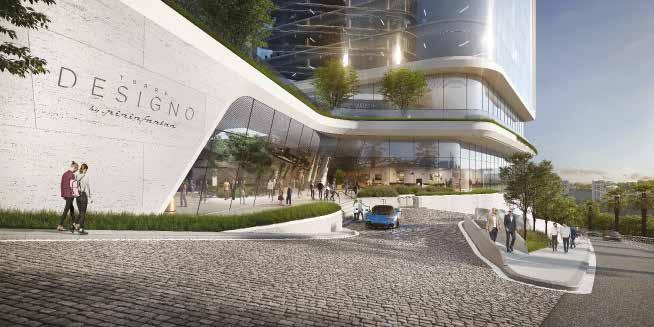
BOSQUE REAL - OFICINAS 4,500 USD m2
CDMX 98 LAND & BUILDING
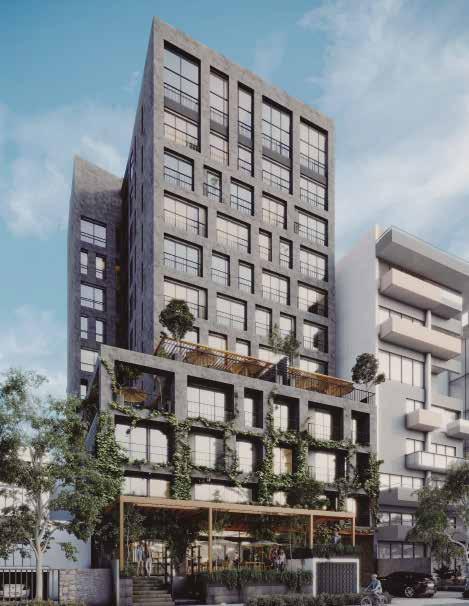
B
L&
Los Cabos, BCS Ciudad de México Guadalajara, Jalisco Cuautla, Morelos
ATENA URBAN LIVING DEPARTAMENTOS







































 Por Gustavo González
Por Gustavo González







 Por Alejandrina Solorzano
Por Alejandrina Solorzano


 Por Arturo Aispuro
Por Arturo Aispuro






















 Por Alejandro Rodríguez
Por Alejandro Rodríguez











 Por Francisco Vargas
Por Francisco Vargas















 Por J. Eduardo Tapia Zuckermann
Por J. Eduardo Tapia Zuckermann







 Por Héctor Segovia
Por Héctor Segovia










 Por Gustavo González
Por Gustavo González



 Por Francisco Vargas
Por Francisco Vargas








 Chefs x Los Cabos to Santiago’s rescue
Chefs x Los Cabos to Santiago’s rescue






















